 |
by Lawrence Bonk on (#72G0W)
LG just revealed several new speakers in the xboom line ahead of CES 2026. These speakers are part of an ongoing collaboration with will.i.am from Black Eyed Peas, who is on board as the "experimental architect" involved with "development, design and brand marketing."These speakers are fairly different from one another, but they all have AI in common. Each speaker includes an algorithm that automatically adjusts the EQ after analyzing the audio content and the listening space. Many also feature an AI algorithm for ambient lighting, which will adjust the lights to match the song being played.The xboom Stage 501 is intended for parties and karaoke sessions. It features additional AI that can remove vocals from "virtually any song" and even adjust the pitch. The battery lasts for around 25 hours and can operate while plugged in. The speaker delivers up to 220W of power, with dual woofers and full-range drivers. It boasts a five-sided cabinet design that allows for vertical and horizontal placement.LGThe xboom Blast is a boombox with a 99Wh battery that allows for up to 35 hours of continuous playback. That's a mighty fine metric. This is a modern boombox, so it's designed for durability. There are edge bumpers and a side rope handle for carrying.LGThe Mini is a tiny doodad that can be placed just about anywhere. It offers ten hours of battery life per charge and a strap for easy placement. The speaker also includes a built-in tripod mount.LGThe Rock is a, well, rock-shaped speaker that's larger than the Mini but can still be held in the palm of the hand. The battery lasts for ten hours and the design is focused on durability. It has been tested to "seven military standards" to ensure reliability in "challenging outdoor environments." This is an upgrade of the pre-existing XG2 model.We don't have pricing or exact availability on this stuff yet, though the speakers will be on display at LG's booth at CES. The company has said that all four of these gadgets will come out in 2026.This article originally appeared on Engadget at https://www.engadget.com/audio/speakers/lg-announces-new-line-of-xboom-speakers-ahead-of-ces-010052598.html?src=rss
|
 Engadget is a web magazine with obsessive daily coverage of everything new in gadgets and consumer electronics
Engadget is a web magazine with obsessive daily coverage of everything new in gadgets and consumer electronics
| Link | https://www.engadget.com/ |
| Feed | https://www.engadget.com/rss.xml |
| Copyright | copyright Yahoo 2026 |
| Updated | 2026-01-11 16:17 |
 |
by Will Shanklin on (#72FYD)
OneXPlayer is quickly establishing itself as a company that isn't afraid to get weird as hell. (Take, for example, its transforming dual-screen gaming portable.) Its latest venture is another retro gaming handheld that, at first glance, looks like a standard dual-screen model. But the Android-powered OneXSugar Wallet uses a single foldable screen instead.The device was teased via a 54-second video on the Chinese video-sharing platform Bilibili. Retro Handhelds reports that the Wallet uses an 8.01-inch OLED with a 2,480 x 1,860 resolution. (That's a 4:3 aspect ratio when unfolded.) The video also shows an asymmetrical analog stick layout with a D-pad and four action buttons.OneXSugar FoldOneXPlayer / BilibiGiven foldable phones' long-term durability concerns, we aren't necessarily betting on the OneXSugar Wallet being a wise purchase. We also don't know how much it will cost. (The aforementioned weird dual-screen device retails for a whopping $799.) But at the very least, don't be shocked if the novel form factor ends up sparking a few copycats in the competitive retro gaming industry.This article originally appeared on Engadget at https://www.engadget.com/gaming/the-onexsugar-wallet-is-an-upcoming-retro-handheld-with-a-43-foldable-screen-215528433.html?src=rss
|
 |
by Ian Carlos Campbell on (#72FYE)
The demand building out AI infrastructure has placed on PC component makers has already led to the death of one consumer-facing RAM brand, but a new report from the International Data Corporation (IDC) suggests it could have an even worse impact on the PC industry at large. In its worst-case-scenario model, the IDC predicts PC shipments could shrink by up to 8.9 percent in 2026 because of the high cost of memory."Instead of expanding conventional DRAM and NAND used in smartphones, PCs and other consumer electronics, major memory makers have shifted production toward memory used in AI data centers, such as high-bandwidth (HBM) and high-capacity DDR5," IDC writes. That's continued to drive up the price of the RAM that is available for PC makers, which has naturally led to them to raise the price of their own products to stay above water. For example, modular PC maker Framework has already had to raise prices on some of its laptops and parts, and says "further cost and price increases are highly likely over the next months." The IDC says prices could rise by 6 to 8 percent in 2026 if its most pessimistic scenario comes true.The timing of this RAM crunch is particularly ironic because selling "AI PCs" - computers with neural processing units that can run AI models locally - were supposed to be one of the things pulling the PC industry out of its post-pandemic slump. Instead, those computers' larger RAM needs leave them more vulnerable to the effects of the AI industry itself. Computers aren't the only electronics impacted, either. The IDC says the average selling price of a smartphone could grow by 6 to 8 percent in its most pessimistic scenario, and smartphone shipments could shrink by as much as 5.2 percent.Companies like Apple and Samsung, with cash to spare and long-term supply agreements, could weather these higher RAM prices and keep things consistent for a year or two, according to the IDC. For everyone else, though, the near-term is looking much more expensive, and by necessity, much less adventurous.This article originally appeared on Engadget at https://www.engadget.com/computing/idc-warns-of-major-pc-market-downturn-due-to-memory-crunch-214510197.html?src=rss
|
by Anna Washenko on (#72FTM)
Samsung will have two new inexpensive mobile devices arriving on the US market next month. The Galaxy A17 5G starts at $199 and will be available on January 7. Arriving on January 8, the Galaxy Tab A11+ will retail for $250.The Galaxy A17 5G has a 6.7" FHD+ Super AMOLED display and is powered by the same Exynos 1330 chip found in the Galaxy A16 5G. The photography setup is also unchanged from last year's model, with a 50MP main camera, 5MP ultrawide, 2MP macro and 13MP selfie lenses. The base model has 4GB of RAM and 128GB of storage, but can be upgraded with up to 2TB of additional storage via microSD. Its 5,000mAh battery also supports fast-charging, a feature we're happy to see becoming more of an industry standard this year. Essentially, this is more of the same from Samsung, but this product line has a solid legacy of decent smartphones that don't break the bank. Don't be surprised if this joins our lineup of best budget Android phones come 2026.The other new entry-level device is the Galaxy Tab A11+, which boasts an 11-inch LCD display. The rear camera is 8MP and the front one is 5MP. It has an option for 6GB of RAM with 128GB in storage, or for 8GB of RAM and 256GB of storage. Like with the Galaxy A17 5G, the tablet can also be juiced up with additional microSD storage. Performance-wise, you'll top out at 15 hours of video playback on the battery, but fast-charging is also supported here. There are many swankier tablets on the market these days, but if you're looking for a bare-bones option, this Samsung offering is a solid consideration.This article originally appeared on Engadget at https://www.engadget.com/mobile/smartphones/samsung-unveils-its-new-200-galaxy-a17-5g-smartphone-arriving-in-january-184846560.html?src=rss
 |
by Andre Revilla on (#72FQT)
Tomorrow's the big day, and I don't just mean New Year's Eve. The series finale of Stranger Things airs tomorrow, and Netflix has released a trailer for the last episode. We're given only flashes of the final episode, along with a voiceover of an emotional Jim Hopper telling Eleven he needs her to fight one last time.It's just over 1 minute and 30 seconds long, with what appears to be only about 30 seconds of new footage. There isn't much to go on here, as most of the footage features emotional moments from seasons past. Netflix no doubt is hoping to keep much of the excitement under wraps until tomorrow's premiere.Warning: Some spoilers ahead for Stranger Things season 5.Among the new images we briefly see Vecna, hooked up to the ceiling in his gross cave of power on his other world. There's also an explosion at what looks like a military site, plus a few more out-of-context flashes of our heroes.One particularly ominous moment shows Hopper walking around a smoke-filled room with almost zero visibility, gun drawn, when we see what looks to be Vecna appear behind him. We also see Eleven climb back into the sensory-deprivation tank in the Upside Down, presumably to take the fight to the show's big bad.The only continuous scene in the trailer shows most of the gang standing atop a radio tower as Vecna's world moves close enough to collide with the tower's tip. Dustin lets out a "mother of God" as the so-crazy-it-just-might-work scheme the group cooked up in Chapter Seven appears to be well underway.After nine years and five seasons, we will finally reach a conclusion for the heroes of Hawkins. The episode premieres at 8PM ET (5PM PT). For those still craving more from the world of Hawkins after the finale, Netflix is releasing a Stranger Things animated series in 2026.This article originally appeared on Engadget at https://www.engadget.com/entertainment/streaming/netflix-has-released-a-trailer-for-the-stranger-things-finale-171204480.html?src=rss
|
 |
by Lawrence Bonk on (#72F0R)
If cleaning up your digital life is on your New Year's resolution list, we've got good news: 1Password is offering half off its subscription plans (both the Individual and Families plans). That brings the price of the Individual plan down to $24 for a year and the Families plan down to $36 for a year.The plans are nearly identical, but the Families plan accommodates five additional people. These discounts are only available to new customers and the prices expire after the year, so set a reminder to cancel or reassess. And you'll need to act fast, because the offer expires today - Tuesday, December 30.This provider topped our list of the best password managers, and for good reason. We appreciated the intuitive interface and the fact that it's available on most platforms, so you'll never be left out in the cold. These include Chrome, Firefox, Safari, Edge, macOS, iOS, Windows, Android and more.Subscriptions include industry standard encryption and a "secret key" that only you know on top of a master password. There's also two-factor authentication and the platform issues alerts when credentials have potentially been compromised.1Password recently raised prices across the board, but this is still looking to be the best deal for our favorite password manager going into the new year. The only downside here is the one that accompanies many password managers: There is no free version.Follow @EngadgetDeals on X for the latest tech deals and buying advice.Update, December 30 2025, 11:43AM ET: This story has been updated to fix broken links, and to note that this is the final day of the sale.This article originally appeared on Engadget at https://www.engadget.com/deals/1password-deal-last-chance-to-save-50-percent-on-our-favorite-password-manager-162844256.html?src=rss
|
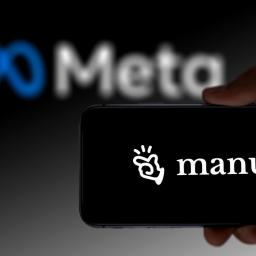 |
by Steve Dent on (#72FN8)
Meta has acquired an AI startup called Manus - known for its custom research and website-building agents - in a deal valued at more than $2 billion, according toThe Wall Street Journal. It's reportedly one of the largest acquisitions yet involving a startup nurtured in China's AI ecosystem.Manus arrived in March 2025, shortly after another Chinese AI startup, DeepSeek appeared on the scene. The company (called Butterfly Effect at the time) originally described it as "the first general AI agent" to perform complex tasks autonomously, rather than just generating ideas. It draws from several third-party models, particularly Anthropic's Claude 3.5 Sonnet and versions of Alibaba's Qwen.Manus is designed to automate certain tasks, like market research, coding, sales data analysis and website cloning and creation. (However, one skeptic called it "a product devilishly optimized for influencers, which is why it exploded so much.") The company claims that Manu is "already serving the daily needs of millions of users and businesses" and has an annualized average revenue of more than $100 million only eight months after launch.Manus laid off most of its Beijing employees this summer before moving its headquarters to Singapore in an effort to expand globally.The company was reportedly seeking a funding round that would have valued it at $2 billion when it was approached by Meta. "Joining Meta allows us to build on a stronger, more sustainable foundation without changing how Manus works or how decisions are made," said Manus CEO Xiao Hong in a company news release.This article originally appeared on Engadget at https://www.engadget.com/ai/meta-buys-startup-known-for-its-ai-task-automation-agents-140045275.html?src=rss
|
 |
by Ian Carlos Campbell on (#72FN9)
Hot on the tail of Amazon's Kindle Scribe Colorosoft, TCL is introducing its own take on a distraction-free note-taking and reading device. Unlike the new Scribe, however, it doesn't use E Ink. The TCL Note A1 NXTPAPER is the company's latest device to use NXTPAPER, TCL's custom paper-like LCD screen, which offers some of the qualities of E Ink without the limitations.TCL says the 11.5-inch color "NXTPAPER Pure" display on the Note A1 has a 2,200 x 1,440 resolution and a 120Hz refresh rate, which should mean it looks clearer and feels much smoother to interact with than the color E Ink screen used on something like the reMarkable Paper Pro. The tablet supports TCL's T-Pen Pro for taking notes and drawing on the screen, but also features eight built-in microphones for recording and transcribing audio. The Note A1 also has a 13-megapixel camera for scanning documents, an 8,000mAh battery and 256GB of storage, with the option to access cloud services like Google Drive or Microsoft OneDrive if you want it.A diagram of different Note A1 NXTPAPER features arranged in a grid.TCLUnlike TCL's past NXTPAPER tablets, the Note A1 doesn't prioritize media consumption - it's a productivity tool first and foremost. TCL says the device runs Android, but hasn't shared whether it'll have access to the Play Store. All the features the company has announced focus on taking notes and using AI to process and organize whatever you've written down. The device will also support real-time translation and "handwriting beautification," among a collection of other AI-powered features.Engadget has reached out to TCL for more information on the Note A1 NXTPAPER's software. We'll update this article if we hear back.There will likely never be one Goldilocks" version of these note-taking devices, but the Note A1 NXTPAPER's combination of display and microphones does make it an intriguing, if limited, alternative to Boox's E Ink tablets. Anyone interested in TCL's new device won't have to wait long to try it, either.The TCL Note A1 NXTPAPER is available to order now through Kickstarter (with additional bonuses and discounts) and will officially go on sale for $549 at the end of February.This article originally appeared on Engadget at https://www.engadget.com/mobile/tablets/tcl-introduces-its-own-take-on-a-color-kindle-scribe-140000207.html?src=rss
|
 |
by Mat Smith on (#72FHD)
CES 2026 is right around the corner, and the pre-show hype cycle/ early reveals suggest, yes, there's going to be an awful lot of AI-powered insert-product-category-here alongside, thankfully, some major announcements from the likes of Intel, Sony and NVIDIA.Intel is finally unveiling its Panther Lake (Core Ultra Series 3) chips. The first chips built on Intel's 2nm process could offer a 50 percent performance boost, which is sorely needed amid intense competition. NVIDIA's Jensen Huang is taking the stage for a keynote expected to feature a lot of AI hype, while AMD's Lisa Su will likely counter with new Ryzen 9000-series chips and the latest on AI upscaling tech.LGOver the years, CES has consistently been the show for TV innovation and heady next-gen displays. This year, we'll be talking a lot about Micro RGB. LG is introducing a new Micro RGB Evo panel with over 1,000 dimming zones, while Samsung plans to launch a full range of Micro RGB TVs from 55 inches to 115 inches. In 2025, Sony introduced a new RGB LED panel that uses individual Mini LED backlights in red, green and blue to produce even brighter, more accurate colors. The company has trademarked True RGB," which could become what Sony calls its spin on RGB displays.We'll be covering all the keynotes, press conferences and big reveals in person. And figuring which of the 100s of AI-branded devices and gadgets are worth reporting on.I'm also taking bets on the most niche celebrity appearance/endorsement at CES 2026. We've seen 50 Cent, Big Bird, Martha Stewart, Archbishop Desmond Tutu, Guillermo del Toro, Justin Bieber and will.i.am (multiple times), so who will join this pantheon of stars?- Mat SmithThe other big stories this morning
|
by Valentina Palladino on (#6DDWF)
An iPad is a great all-purpose device, but it also needs protection if you want it to last. A good case can guard against drops, add a stand for videos or sketching sessions and even make your iPad feel more like a lightweight laptop. Whether you prefer something slim, rugged or packed with useful features, there is a case that fits the way you use your tablet.
 |
by Andre Revilla on (#72FBD)
LG will unveil a canvas-style art TV, dubbed the LG Gallery TV, at CES 2026. The new model will be offered in 55-inch and 65-inch variants, and sports a flush-mount design along with customizable magnetic frames.The Gallery TV uses a Mini LED display and the company's Alpha 7 AI processor and offers 4K resolution. The new model will also leverage the LG Gallery+ service, a paid subscription with a library of over 4,500 works that users can display on the TV. Users will also be able to create custom images using generative AI or display images from personal photo libraries.LG says the TV was developed with museum curators, and will feature a Gallery Mode that optimizes brightness and color to show off the texture of displayed artwork. The display will have some degree of reflection handling and glare reduction, though precise details were not shared. The TV will automatically adjust picture settings to maintain an optimal image in response to changing ambient light throughout the day.This isn't the first time LG has released an art-inspired TV. It released an ultra-thin OLED model called the LG GX Gallery TV in 2020. It has also released other "Gallery Design" TVs that offer wall-flush mounting in the past, but the new LG Gallery TV with dedicated art-focused features seems like a more direct competitor to Samsung's "The Frame" or the Hisense CanvasTV.This article originally appeared on Engadget at https://www.engadget.com/home/home-theater/lg-to-unveil-a-canvas-style-tv-at-ces-2026-010024691.html?src=rss
|
 |
by Igor Bonifacic on (#72F57)
After a rudderless year and an exodus of around 4,000 employees due to Trump administration cuts, NASA got what may be its first piece of good news recently. On December 17, the Senate confirmed billionaire Jared Isaacman as the agency's new administrator. He now holds the power to rehabilitate a battered engine of scientific research, or steer it towards even more disruption.Considering the caliber of President Trump's other appointees, Isaacman is probably the best candidate for the job. Outside of being a successful entrepreneur, he has flown fighter jets and been to space twice as part of the Inspiration4 and Polaris Dawn private missions. One of those flights saw him complete the first commercial space walk, and travel farther from Earth than any human since the end of the Apollo program."Perfect is the enemy of the good. Isaacman checks a lot of boxes," says Keith Cowing, a former NASA employee and the founder of NASA Watch, a blog dedicated to the agency. "He's passed every requirement to fly in a spacecraft that American astronauts at NASA are required to pass. He also went out of his way to have a diverse crew, and shove as much science as he could in those missions."And yet if you're a NASA employee or just someone who cares about the agency's work, there are still plenty of reasons to be concerned for its future. When Trump first nominated Isaacman in the spring, the billionaire wrote a 62-page document detailing his vision for NASA. In November, Politico obtained a copy of that plan, titled Project Athena.To some insiders, Project Athena painted a picture of someone who, at least at the time when it was written, fundamentally misunderstood how NASA works and how scientific discovery is funded in the US and elsewhere. It also suggests Isaacman may be more open to Trump's NASA agenda than would appear at first glance.When asked about the plan by Politico, one former NASA official characterized it as "bizarre and careless." Another called it presumptuous," given many of the proposed changes to the agency's structure would require Congressional approval. In one section, Isaacman recommended taking NASA out of the taxpayer funded climate science business and [leaving] it for academia to determine." In another section, he promised to evaluate the relevance and ongoing necessity" of every agency center, particularly NASA's iconic Jet Propulsion Laboratory, saying the facility and others must increase the output and time to science KPI."A lot has changed since Isaacman first wrote that document. It came before the workforce cuts, before the future of Goddard Space Flight Center became uncertain and before Trump surprised everyone by renominating Isaacman. But during his Senate testimony earlier this month, the billionaire said I do stand behind everything in the document, even though it was written seven months ago. I think it was all directionally correct."He did appear to distance himself from some viewpoints expressed in or inferred by Project Athena, however. Isaacman stated that anything suggesting that I am anti-science or want to outsource that responsibility is simply untrue." He also came out against the administration's plan to cut NASA's science budget nearly in half, claiming the proposals would not lead to "an optimal outcome."One thing is clear, Isaacman is not your typical bureaucrat. "One of the pitfalls of some prior NASA administrators has been that they've shown too much reverence for the internal processes and bureaucratic structure of the agency to the detriment of decision-making and performance," said Casey Drier, chief of space policy at The Planetary Society, a nonprofit that advocates for the exploration and study of space. "Isaacman has positioned himself as the opposite of that. Clearly, that's something that could lead to a lot of political and congressional challenges if taken too far."Even if Isaacman doesn't follow through on any of the proposals made in Project Athena, there's only so much a NASA administrator - even one sympathetic to civil servants working under them - can do."Once a budget request goes out publicly, everyone in the administration has to defend it. Anything he does will have to be internal and private," Drier explains. "He never explicitly criticized the administration during his hearing. He's also coming relatively late in the budget process."A lot of NASA's future will depend on the White House Office of Management and Budget (OMB), which is responsible for implementing the president's agenda across the executive branch. As a direct result of guidance the OMB issued over the summer, NASA awarded 25 percent fewer new grants in 2025 than it did on average between 2020 and 2024."The OMB has added layers of requirements that scientists now have to go through to spend the money they've already been allocated. The administration has worked against its own stated goals of efficiency," Drier said. "Isaacman can't solve that himself. He can't tell the OMB what to do. That's going to be a serious challenge."Looming over everything is the fact NASA still does not have a full-year budget for 2026. Congress has until January 30 to fund NASA and the rest of the federal government before the short-term funding bill it passed on November 12 runs out. "On paper, the official policy of the administration is still to terminate a third of NASA's scientific capability," Drier points out.There are reasons to be cautiously optimistic. Publicly, both the House and Senate have come out against Trump's funding cuts. And some science missions that were slated to be cancelled, such as OSIRIS-APEX, have been approved for another full year of operations.What NASA needs now is someone who will, as Drier puts it, "vigorously advocate" for the agency in whatever way they can. It remains to be seen if that's Jared Isaacman.This article originally appeared on Engadget at https://www.engadget.com/science/space/nasa-finally-has-a-leader-but-its-future-is-no-more-certain-201109072.html?src=rss
|
 |
by Andre Revilla on (#72F3A)
Micha Kiciski, co-founder of CD Projekt, has acquired total ownership of the DRM-free video game storefront GOG. The digital video game platform was started by CD Projekt in 2008 with a stated mission to preserve "Good Old Games" (hence the GOG acronym). CD Projekt is known for its game studio CD Projekt Red, the developers The Witcher series and Cyberpunk 2077.GOG said Kiciski bought 100 percent of its shares for PLN 90.7 million ($25 million). The acquisition was fully financed through committed funding secured at the sale's closing and did not involve the sale of any of Kiciski's CD Projekt shares.The storefront will continue to operate independently under its new owner, sticking with its DRM-free philosophy and ongoing work to keep classic titles playable on modern PCs. After the sale, CD Projekt and GOG signed a distribution agreement that will see CD Projekt Red games continue to be listed on GOG.While the press release for the sale did not list a reason, a report posted Monday under the Regulatory Announcements section of the CD Projekt website states "the sale of shares in GOG is consistent with the CD PROJEKT Group growth strategy, which assumes focusing on the core business of the Company, i.e., developing and publishing video games and related projects based on the owned and new franchises." The report also describes a "competitive sale process," implying that Kiciski may not have been the only bidder.While it seems Kiciski will have a hands-on role in GOG after its acquisition, his current involvement at CD Projekt is less clear. He remains a significant shareholder but is not listed on the company's Management board or its Supervisory board.This article originally appeared on Engadget at https://www.engadget.com/gaming/pc/co-founder-of-cd-projekt-micha%C5%82-kicinski-has-acquired-gog-the-companys-game-storefront-174853415.html?src=rss
|
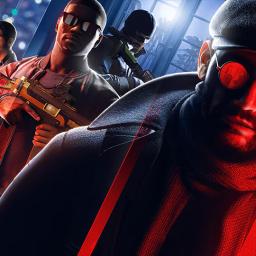 |
by Jackson Chen on (#72EGK)
Ubisoft had to shut down Rainbow Six Siege's servers and roll back transactions, a situation that came from a widespread breach that left various players with billions of in-game credits, ultra-rare skins of weapons, and banned accounts. As of Sunday, December 28, the status page on Rainbow Six Siege's website still shows "unplanned outage" on all servers across PC, PlayStation and Xbox.Later that evening, though, the company confirmed that it was done testing on the update it pushed out and was opening the severs back up to players. It also said that the transaction rollback was complete, but that the Marketplace would remain closed for the time being.
|
 |
by Andre Revilla on (#72EWD)
Samsung has announced that it "aims to be the first" to natively integrate Google Photos into TVs. The aim is for Google Photos to work seamlessly with Vision AI Companion, Samsung's souped-up version of Bixby. This would help to make user photos part of the day-to-day TV experience, with photos appearing while navigating the TV's OS during "contextual and convenient moments."The company says users will be able to explore their Google Photos libraries in three new experiences. The first is called Memories, and will show curated stories based on "people, locations and meaningful moments." This has a planned launch in March 2026 and will be exclusive to Samsung TVs for six months.Create with AI will use Google DeepMind's image generation and editing model, enabling users to transform their photos using AI using themed templates. Users will also be able to turn any still image into a short video using the tool. Create with AI has a planned launch in the second half of 2026.Finally, Personalized Results will create themed slideshows of users' photos based on particular topics or the content of an image. Examples given by Samsung include the ocean, hiking and Paris. This also has a planned launch in the latter part of 2026.This article originally appeared on Engadget at https://www.engadget.com/home/samsung-plans-to-integrate-google-photos-into-its-tvs-132739713.html?src=rss
|
 |
by Valentina Palladino on (#5T5EA)
The right accessories can make your iPhone feel more capable and more personal. Whether you want to protect your phone, improve your photos or stay powered during a long day out, there are plenty of accessories that can make a real difference. MagSafe gear has opened the door for new chargers, stands and mounts, while portable batteries and compact lenses can upgrade your everyday routine.
|
by Jon Fingas,Valentina Palladino on (#69K28)
Imagine never having to fumble with a charging cable again. That's the magic of a wireless charger. Not only does going wireless clear up your space and make charging as simple as setting your phone down, but it's also surprisingly versatile. Whether you're looking for a sleek charging pad for your nightstand, a stand that keeps your phone propped up on your desk or even a foldable charger for convenient travel, there's a wireless charger designed to fit your lifestyle. Some can even double as a car charger, keeping your phone powered up on the go without the hassle of cables to plug in. With so many convenient options, it's easy to see why more people are ditching their wired chargers and embracing the effortlessness of wireless. These are the best wireless chargers we've tested so far. Table of contents
 |
by Jackson Chen on (#72EHH)
Apple isn't ready to pay a several billion-dollar fine to UK App Store users and is filing an appeal over a major antitrust lawsuit. As first reported by The Guardian, Apple has requested to appeal to the UK's Court of Appeal, which would escalate the case beyond the Competition Appeal Tribunal (CAT).The latest appeal attempt follows an October decision from the CAT, where the court found that Apple engaged in anticompetitive practices by exploiting its dominant market position with the App Store to charge higher fees. The CAT's ruling established a 1.5 billion, or roughly $2 billion, fine, but Apple said it planned to appeal and that the court "takes a flawed view of the thriving and competitive app economy." The CAT didn't grant Apple the appeal, leading the iPhone maker to seek a higher court to overturn the ruling.Apple hasn't made any official statements about its latest appeal application, but it's likely that it will argue against the CAT's proposed App Store developer fee rate of between 15 and 20 percent, which it reached through "informed guesswork," instead of the existing 30 percent. If the fine does ultimately stick, the $2 billion fine would be split amongst any App Store user in the UK who made purchases between 2015 and 2024, according to The Guardian.This article originally appeared on Engadget at https://www.engadget.com/big-tech/apple-escalates-its-appeal-of-a-2-billion-fine-from-a-uk-antitrust-lawsuit-201922558.html?src=rss
|
 |
by Jackson Chen on (#72EEZ)
After the high price tag of the Ayaneo Pocket DMG turned some retro handheld fans away, Ayaneo is working on another remake of the classic Game Boy with a slightly more affordable cost. Ayaneo revealed the pricing for the Pocket Vert, which starts at $269 for early bird orders.Compared to the Pocket DMG that retails for $449, Ayaneo skipped the OLED and configurations that go up to 16GB of memory and 1TB of storage for the Pocket Vert. Instead, the handheld maker went with a fully metal CNC body and an ultra-minimalist design with engraving-free buttons that resemble the Analogue Pocket's look. Ayaneo built the Pocket Vert with a smaller 3.5-inch LCD screen that has a 1,600 x 1,440 resolution and a Snapdragon 8+ Gen 1 chip that should allow the handheld to handle anything up to PS2 and some Nintendo Switch games.AyaneoTo play more modern games, the Pocket Vert has a hidden touch pad below the buttons that acts as a makeshift joystick. Ayaneo also hid a fingerprint sensor in the power button and included a USB-C port, a 3.5mm headphone jack and a microSD slot for more storage capacity. The Indiegogo campaign for the Pocket Vert isn't open yet, but it will be the only place to snag the latest vertical handheld from Ayaneo at its lowest price before it reverts to the retail price of $339. You can even opt for the fully specced-out version that's only available in Lava Red and has 12GB of memory and 256GB of storage for an early bird price of $369 and a later standard price of $439.This article originally appeared on Engadget at https://www.engadget.com/gaming/ayaneos-latest-game-boy-remake-will-have-an-early-bird-starting-price-of-269-174553644.html?src=rss
|
 |
by Jackson Chen on (#72E0B)
Stardew Valley is truly the gift that keeps on giving. Fans of the farm life simulator, specifically those who already own it for the Nintendo Switch 2, can download a free upgrade that introduces new features and multiplayer modes.If you have Stardew Valley on the Switch 2, you can download the Upgrade Pack that introduces mouse controls to make it easier to place furniture and organize your inventory. The upgrade also adds local split-screen co-op for up to four players and online multiplayer that maxes out at eight players. On top of the co-op modes, the free content pack includes Game Share compatibility, meaning only one player needs a copy of Stardew Valley to share it with three others.This Upgrade Pack may not have as much content as a numbered update, but some players are already reporting bugs. According to user accounts, the online multiplayer mode isn't working, while other reports noted that some crafting recipes had inaccurate material requirements or quantities. In a post on X, Eric Barone, the game's developer who's better known as ConcernedApe, said that he's taking "full responsibility for this mistake" and that the development team "will fix this as soon as possible." Later that day, Barone posted that online co-op should be fixed on both the Nintendo Switch and Switch 2 versions, adding that "we are investigating and will follow up with patches as needed" for the remaining issues.On top of addressing the bugs from the latest Upgrade Pack, Barone and the rest of the development team are also working on the upcoming 1.7 update for Stardew Valley, while Haunted Chocolatier is still under development.Update, December 28 2025, 10:45AM ET: This story has been updated to reflect Barone's latest update that online co-op has been fixed.This article originally appeared on Engadget at https://www.engadget.com/gaming/nintendo/stardew-valley-players-on-the-nintendo-switch-2-get-a-free-upgrade-174849697.html?src=rss
|
 |
by Jackson Chen on (#72E3F)
Samsung is adding two brand new speakers to its audio lineup, along with updated soundbars boosted with AI features. While not as inconspicuous as the Samsung Frame, the new WiFi speakers, called the Music Studio 5 and 7, were designed to blend into your living room's atmosphere with their minimalist design. However, if you're looking for a more convenient option, Samsung also updated its flagship HW-Q990H soundbar, while also introducing the more affordable choice of the HW-QS90H.Samsung built the Music Studio 5 with a four-inch woofer and dual tweeters, pairing them with a built-in waveguide to deliver better sound. To customize the sound, Samsung added its new AI Dynamic Bass Control that can make bass sound better without any distortion. You can even control the "gallery-inspired" speaker via voice or Bluetooth and it's compatible with WiFi casting and streaming services.SamsungFor an upgraded option, the Music Studio 7 comes with a 3.1.1-channel spatial audio that has top-, front-, left- and right-firing speakers to give a more immersive 3D audio experience. You can calibrate the sound even further with the Samsung Audio Lab Pattern Control Technology and the same AI Dynamic Bass Control feature seen with the Music Studio 5. Samsung says the Music Studio 7 can play Hi-Resolution Audio with up to 24-bit/96kHz audio processing and can either be used as a standalone speaker or paired with other Samsung audio devices.SamsungTo round out its new audio offerings, Samsung debuted the HW-QS90H, or its All-in-One Soundbar, with a 7.1.2.-channel system that features 13 drivers, nine of which are wide-range speakers. The new soundbar's built-in Quad Bass Woofer system means you can achieve deeper bass without a separate subwoofer. The All-in-One Soundbar even features Samsung's Convertible Fit design that can handle being mounted on a wall or placed on a table, and a gyro sensor that can automatically adapt channel distribution depending on its orientation, like we saw with the QS700F.Samsung even refreshed its flagship HW-Q990H soundbar this year and introduced to it the Sound Elevation feature that makes dialogue sound more natural and Auto Volume, which regulates a consistent volume across its channels for a more balanced sound. All of Samsung's latest soundbars and speakers will be on display at CES 2026.This article originally appeared on Engadget at https://www.engadget.com/audio/speakers/samsungs-two-new-speakers-will-deliver-crisp-audio-while-blending-into-your-decor-230053770.html?src=rss
|
 |
by Cheyenne MacDonald on (#72E3G)
OpenAI is looking for a new Head of Preparedness who can help it anticipate the potential harms of its models and how they can be abused, in order to guide the company's safety strategy. It comes at the end of a year that's seen OpenAI hit with numerous accusations about ChatGPT's impacts on users' mental health, including a few wrongful death lawsuits. In a post on X about the position, OpenAI CEO Sam Altman acknowledged that the "potential impact of models on mental health was something we saw a preview of in 2025," along with other "real challenges" that have arisen alongside models' capabilities. The Head of Preparedness "is a critical role at an important time," he said.Per the job listing, the Head of Preparedness (who will make $555K, plus equity), "will lead the technical strategy and execution of OpenAI's Preparedness framework, our framework explaining OpenAI's approach to tracking and preparing for frontier capabilities that create new risks of severe harm." It is, according to Altman, "a stressful job and you'll jump into the deep end pretty much immediately."Over the last couple of years, OpenAI's safety teams have undergone a lot of changes. The company's former Head of Preparedness, Aleksander Madry, was reassigned back in July 2024, and Altman said at the time that the role would be taken over by execs Joaquin Quinonero Candela and Lilian Weng. Weng left the company a few months later, and in July 2025, Quinonero Candela announced his move away from the preparedness team to lead recruiting at OpenAI.This article originally appeared on Engadget at https://www.engadget.com/ai/openai-is-hiring-a-new-head-of-preparedness-to-try-to-predict-and-mitigate-ais-harms-220330486.html?src=rss
|
 |
by Jackson Chen on (#72E14)
The Retroid Pocket 6 may have gotten off to a rocky start, but the gaming handheld is officially completed and going to see its first shipments soon. The handheld maker revealed the final product shots of the Retroid Pocket 6 in black and orange on X. Along with in-person product pics, Retroid revealed gameplay videos of its handheld, running emulation of PlayStation 2 games.For those looking to relive some classic Nintendo or PlayStation titles, the Retroid Pocket 6 offers a great entry point into the retro handheld world since it can emulate games up to Nintendo Switch and PS2. However, Retroid did have some initial blowback about its design and decided to go back to the drawing board. Following the early criticisms, Retroid decided to add an option for customers to choose between having the D-pad or a thumbstick at the top of the handheld's left side.RetroidThe problems persisted for Retroid, as the handheld maker had to then cut short the early bird pricing thanks to the widespread memory shortage. Instead of offering the handheld for $209 until January, Retroid removed the discount in late December, leaving new buyers paying the full retail price of $229. However, the internal specs remained the same, with a Snapdragon 8 Gen 2 processor, up to 12GB of memory and up to 256GB of storage that's expandable with a TF card slot.Despite the hiccups, Retroid looks ready to start shipments of its latest retro gaming handheld as evidenced by the new photos and videos. According to the website, the first batch of Retroid Pocket 6 preorders are due to start shipping in January. Second bath preoders are still available on Retroid's website, which are expected to get to customers in March.This article originally appeared on Engadget at https://www.engadget.com/gaming/heres-the-first-real-look-at-the-retroid-pocket-6-running-ps2-games-193624145.html?src=rss
|
 |
by Andre Revilla on (#72DPV)
The State of New York will now require social media platforms to display warning labels similar to those found on cigarettes. The bill was passed by the New York Legislature in June and signed into law by Gov. Kathy Hochul on Friday. It will apply to any platforms that feature infinite scrolling, auto-play, like counts or algorithmic feeds. The labels will caution those on the platform about potential harm to young users' mental health.Social media companies will be required to display these warning labels when a user first interacts with any of the features the state considers predatory. The warning will also be displayed periodically after that interaction."Keeping New Yorkers safe has been my top priority since taking office, and that includes protecting our kids from the potential harms of social media features that encourage excessive use," Gov. Hochul said in a statement. The law will apply when any of these platforms are being accessed from New York. Gov. Hochul also signed two bills into law last year aimed at protecting kids from social media.Concerns over the mental health effects of social media platforms on younger users have been mounting and government bodies have been increasingly taking action. A bill similar to the one in New York has been proposed in California. This year Australia became the first nation to ban social media for children, with Denmark soon to follow.Last year the US surgeon general said social media should come with warning labels and highlighted data associating social media use with increased anxiety and depression in youth. The risks of social media use on children's mental health are multifactorial and are still being studied.We've reached out to Meta, Snap and TikTok for comment and will update if we hear back.This article originally appeared on Engadget at https://www.engadget.com/social-media/new-york-state-will-require-warning-labels-on-social-media-platforms-210306716.html?src=rss
|
 |
by Engadget on (#72DNG)
If streaming services' year-in-review campaigns have shown us anything, it's that we've spent a staggering amount of time drowning out the hum of everyday life with music, podcasts and audio series. And with some incredible new releases this year, we were really eatin' good. Here are some of the Engadget team's favorite things we listened to in 2025.Spiritbox - Tsunami SeaI became aware of Spiritbox in late 2024 shortly before the band dropped its latest album, Tsunami Sea. At the time, I was in a deep Sleep Token phase, and I don't remember how I stumbled upon Spiritbox, but I'm sure glad I did. Not knowing anything about the band, I initially thought it had two singers: one for clean vocals and another for the harsh, guttural screams.Well, I was wrong. Vocalist Courtney LaPlante handles it all, and she is a force of nature. After learning of a new band, I do what any self-respecting music nerd does: I looked up live videos of them on YouTube. The way LaPlante seamlessly transitions from airy, ambient singing to some of the best growls you'll hear in metal music is effortless. And after seeing Spiritbox live in person earlier in December, I can attest to her ability to consistently nail both vocal styles for the entirety of an hour-long set.My infatuation with Spiritbox isn't just with the vocalist though. Guitarist Mike Stringer, LaPlante's husband, also has a lot of unique abilities to offer. Stringer's use of noise and whammy effects in his riffs create a signature style, not to mention his mix of nu-metal, djent and metalcore sensibilities. He also has some of the thickest guitar tones I've ever heard live, and I was mesmerized for the full set. Stringer's guitar work on Tsunami Sea is a prime example of a unique musician at the height of his powers.Tsunami Sea takes you on a ride. The first two tracks are all-out ragers, and after a slight respite in Perfect Soul" and Keep Sweet," the album's best song comes fifth. I've heard LaPlante dedicate it to all the people I love to fucking hate," and it's clearly written about her enemies. It's also the perfect example of what this band is capable of. It's three minutes of LaPlante's screams interlaced with plenty of Stringer's trademark guitar work.The rest of the album showcases the band's ability to blend dynamics, with No Loss, No Love" and Ride The Wave" providing the highlights on the back half of the record. The album's title track is a great vehicle for LaPlante's clean vocals, serving as the introduction to the album's second act. If you've been enamored with Sleep Token this year like I have, give Spiritbox a go - you won't be sorry you did. - Billy Steele, Deputy Editor, ReviewsBandsplainI didn't discover Bandsplain in 2025, but I definitely listened to it more than any other podcast in terms of total time spent. Sure, that's because most episodes are over three hours long, but I digress. Host Yasi Salek does a deep dive on cult bands and iconic artists" to... ahem, bandsplain why people love them. There's a deep catalog of back episodes, so there's sure to be an in-depth analysis of a band you're familiar with. But even if you think you know an artist, I'm willing to bet Salek will divulge parts of the story you weren't aware of.Jimmy Eat World's Clarity is a top 5 all-timer for me, and Salek had plenty to offer about the narrative around that album I didn't know. Her grunge series from 2024 was a history lesson I wish I'd had in middle school when I first discovered Soundgarden, Pearl Jam, Alice in Chains and the rest of the lot. An older episode about Nine Inch Nails served as the primer for me seeing the band live for the first time in September. And that's the thing about the show: the back catalog holds up. If you're waiting for the next installment to drop, there's certainly something in the archives you'll enjoy.No shade to Salek's colleagues at The Ringer, but the best episodes of Bandsplain are when the guest is a musician. Thursday front man Geoff Rickly was excellent on that Nine Inch Nails episode, and Death Cab for Cutie singer Ben Gibbard had me on the edge of my seat when he was on to discuss The La's - a band I'd never heard of before. I'd also highly recommend the episodes on Oasis and the more recent one on Alanis Morissette. But, really, you can't go wrong starting from anywhere on the episode list. - B.S.Lucy Dacus - Forever is a FeelingI remember being a teenager and hearing from an adult that they did not religiously seek out, research, evaluate and introduce new bands and songs into their lives as if all existence would cease without the life-sustaining energy of new music. I was confused, concerned and damn sure that wouldn't happen to me.You know where this story goes: Job. Kid. House. Spouse. Pets that will die if I don't feed, walk, play with and/or medicate them. I allow the algorithm to feed me new songs but rarely does something stick, so I end up listening to tracks I bonded with in my teens and twenties.This year, Blossom & Bones, a three-day music festival in Ghost Ranch, New Mexico, managed to push through the churn and lodge new music into my brain. Along with my kid and some friends, I camped among some of the most beautiful landscapes imaginable and ambled over to the stage each evening for performances by Santigold, Ani DiFranco and about a dozen more.Lucy Dacus, one third of the indie group Boygenius, did a one-hour set with plenty of songs from her latest album Forever is a Feeling. Hearing the songs for the first time, I felt like I'd been listening to them for years. Lilting harmonies and layered strings create a lovely backdrop for Dacus's velvet voice, but there's a sharpness to her observations about relationships, rejection and sex. I've been looping the album ever since. - Amy Skorheim, Senior Reporter, Buying AdviceBlanco White - So Certain" (single)Early on the last concert of the day at that same festival, Blanco White took the stage. People were aimlessly milling about and the sun hadn't yet set. Kids were playing on the lawn and the smell from the food trucks was intense, but I was enrapt by the four people on stage. The sad violin and strummy guitars floated with the hand-beat drum out into the red hills. The music sounded like I felt: rooted and wrapped in the harsh beauty of the desert and I was really glad to take that home with me. - A.S.Martian RevolutionIf you're as big a nerd as I am, you might know that Leo Tolstoy didn't consider War and Peace to be a novel. The story is what most people read for, but in the author's mind, all the drama was a parable to illustrate his grand theory of history.Over the last year, history podcaster Mike Duncan has accomplished a similar feat using a medium Tolstoy never imagined. Duncan's Revolutions podcast has covered ten different revolutionary upheavals across history, starting with the English Civil War and ending with the Russian Revolution. After wrapping up the Bolsheviks, Duncan took a few episodes to suggest a grand theory of how revolutions unfold. For a while, it seemed like that was all we'd get. Then, in the middle of 2024, he started posting original sci-fi - without any indication that this tale, which followed future Martians revolting against their corporate overlords on Earth, was in any way different from the previous ten seasons.Part of what makes the Martian Revolution so excellent is Duncan's deadpan delivery. He never once breaks character. He rattles off lists of fictional sources, apologizes for inaccuracies in prior episodes, and introduces made-up historical figures with the same gravity he once used to mention George Washington or Simon Bolivar. If you're a fan of Revolutions, you'll have a blast recognizing character archetypes. (Mabel Dore is the Liberal Noble! Timothy Werner is the Man of Blood!)But the podcast is great even if you've never listened to an episode of Revolutions. It has an excellent grasp of character and a sense of inevitable tragedy, but with moments of joy leavened throughout. I certainly hope we don't wind up in the megacorp-ruled future of the podcast, but if we do, it'll be a great consolation if it eventually turns out the way Duncan imagines. - Sam Chapman, Senior WriterRon Gallo - CheckmateMy favorite artists are ones that surprise me, and Ron Gallo is a master of reinvention. He's dabbled in absurdist punk, psychedelia, garage rock, Beatles-tinged pop and, now, stripped-down acoustic music. This is not a genre I am typically a fan of, Elliott Smith withstanding, but Checkmate is something special. His lyrical prowess is off the charts here, trading his usual wordplay for simple and emotionally-gutting truisms about life, love and, well, the end of the world.Of course, the lyrics wouldn't work if the songs weren't good. The songs are very good. The title track is just about the perfect love song, with a primary hook that gets lost in your head for weeks. Other tracks offer hints of Mac DeMarco, Dan Fogelberg, Kevin Morby and just about everyone else who has crafted great songs on an acoustic guitar. It's fitting that Gallo has found a home on the label Kill Rock Stars, which released so much of Elliott Smith's work back in the day. As an aside, Gallo regularly posts songs about current events on TikTok and other social media platforms, which are worth checking out if you like stuff like Jesse Welles. - Lawrence Bonk, Contributing ReporterDe La Soul - Cabin in the SkyThere have been hip-hop albums that explored the finality and tragedy of death, but not many that truly tackled spirituality and long-term grief. De La Soul has done just that, following the passing of founding member Trugoy the Dove. This album serves as a final testament of sorts for Trugoy, as he's heavily featured throughout. In that way, Cabin in the Sky is reminiscent of A Tribe Called Quest's 2016 masterpiece We Got It from Here... Thank You 4 Your Service, which followed the death of rapper Phife Dawg.Like Tribe's modern classic, Cabin in the Sky is filled with absolute bangers. It features standout beats by DJ Premier, Pete Rock, Trugoy, Jake One and others. The rhymes are great and all three primary De La members are given time to shine. Guest rappers like Common and Nas got the memo, delivering some of their most memorable verses in years. Heck, even Giancarlo Esposito is on board as the narrator. Some reviewers have dinged this album for being too long but, come on, that's like complaining there's too much pizza. It's De La Soul. - L.B.FKA twigs - EusexuaThis was a really good year for new music IMO, so much that I've been finding it pretty difficult to think back and settle on my favorite releases. But, FKA twigs' Eusexua undeniably did some heavy lifting for me, pretty much carrying me through the first six or so months of the year without much competition, and I've circled right back to it as the year closes. It's an album that somehow seems to meet every vibe. It'll have you in club mode and ready for a night of sweaty, filthy dancing in under three minutes, or feeling bright and upbeat like a midday walk on the first day of spring - yet it still hits when you're having a good ol' car cry."Girl Feels Good" is for sure one of my most-played songs of the year, followed closely by "Eusexua," "Perfect Stranger," "Keep It, Hold It" and "Striptease." If ever I can't decide what I'm in the mood to listen to, I throw this album on and it doesn't disappoint. - Cheyenne MacDonald, Weekend EditorFaetooth - LabyrinthineFaetooth's sophomore album, Labyrinthine, is face-melting, melancholic perfection. The band describes its sound as "fairy doom," but don't let that first word fool you into thinking it isn't heavy as hell. Labyrinthine goes unbelievably hard, and will have you feeling like you're eternally wandering a cursed bog, surrounded by the wailing of the unfortunate souls who came before you. Don't believe me? Put on "White Noise." This is really an album that should be enjoyed in its entirety, though, and I can't individually name half the songs on it because I tend to just keep the whole thing playing on rotation. - C.M.Orville Peck - AppaloosaThis EP is truly a testament to my ability to run my obsessions into the ground, because it only came out in mid-November and somehow landed on my most-listened wrapup for the end of the year... which was released some two weeks later. It's front-loaded with its strongest songs, a powerful and kind of haunting trio that just flows beautifully from one into the other: "Dreaded Sundown," to "Drift Away" into "Atchafalaya" (ft. Noah Cyrus). As a fan of musicals, I also loved the inclusion of "Maybe This Time," a cover from Cabaret, especially since I was pretty bummed to have missed Peck's stint as the Emcee in Cabaret on Broadway this summer. - C.M.Case 63I got into an audio series kick this year, and dove into shows like Unicorn Girl, Stalked! and more. But none of the dramatized fiction I listened to in 2025 had me hooked like Case 63. Setting aside that it's voice-acted by A-listers Julianne Moore and Oscar Isaac, which is a phenomenal pairing that won me over on star power alone. The best thing about Case 63 is its storytelling.Moore stars as a psychologist, meeting Isaac for the first time in a prison interview. Isaac has been claiming to be a traveler of sorts, and through recorded sessions and voice notes, we hear his side of the story, as well as her reactions and ultimate involvement in the adventures. Every step of the way, particularly in the beginning, there is clear explanation as to why the exchange is being recorded. It isn't necessary, but it's helpful in my buying into the realism of the story.It isn't just the method and technical aspects of the storytelling, of course. Narratively, Case 63 is a gripping ride, and thanks to its short episodes, it's easy to binge really quickly. There is certainly a generous use of cliffhangers to help speed things along, but I found myself eager to devour the entire series in one commute. The story continued to linger in my mind days after I finished both existing seasons, and I'm hoping the new one drops soon. If you're looking for a quick and easy sci-fi audio series, do not miss Case 63. - Cherlynn Low, Managing EditorSecure LoveI spent a lot of time this year trying to learn more about my attachment style and how it shows up in all the relationships in my life. Between Stephanie Rigg's On Attachment podcast, the TV show Couples Therapy and all the books on the topic of attachment styles, trauma and more, I've consumed them all. And while they've all been helpful in different ways, one podcast stuck out to me this year. It's hosted by Julie Menanno, MA, LMFT, LCPC, creator of the @TheSecureRelationship account on Instagram and the author of Secure Love: Create a relationship that lasts a lifetime.You can probably tell from that introduction what Menanno's work is all about. Relationships, from the lens of attachment styles. The Secure Love Podcast doesn't just re-deliver the same information we've seen published across various media and platforms, though. Each season of the podcast (it's partway through the second as of this writing) sees Menanno work with one couple through their negative cycles, using somatic practices to help each partner understand their emotions, triggers and reactions. Because we're listening to real people talk about real-life happenings, it's not only easy to relate, but listeners often see themselves in these scenarios. At the start of each episode, too, Menanno reads out or plays notes from the audience, and you can see how fellow listeners have reacted.This season, for example, my friend and some other listeners seemed to really dislike Brian, the anxious male partner in this season's pair. While I've certainly found some of Brian's ways of speaking borderline offensive, I had a lot more sympathy for him as I started seeing his traits in my loved ones. I also started to identify with his partner Bethany, who Menanno typed as having an avoidant attachment style.As I listened to Bethany and Brian describe the reasons they got into fights and explain where they were coming from, suddenly it felt like the world made sense. I saw similar patterns and reasonings in my own relationship, as well as those of my parents, relatives and friends.It is slightly voyeuristic to listen to something so intimate, of course, but Menanno makes it all educational rather than just entertaining. She gently interrupts parts of each episode to tell the audience why she asks certain questions or what she's attempting to achieve by asking Brian or Bethany to sit with their difficult feelings.I found her method familiar, as I recently started working with a somatic coach whose approach is similar to Menanno's, which is rooted in emotion-focused therapy (EFT). Staying with uncomfortable feelings makes me want to jump out of my skin, but being able to endure them, question why they arise and then understand where they come from is crucial to helping uncover the thinking that causes them. Sometimes they're the result of flawed logic, catastrophic thinking or a simple lack of context, but often they're very reasonable reactions.If you're looking to understand yourself and your emotions a bit better, or just want to get an idea of what EFT or couples therapy sounds like, I can't recommend The Secure Love Podcast highly enough. - C.L.This article originally appeared on Engadget at https://www.engadget.com/entertainment/music/what-we-listened-to-in-2025-201308584.html?src=rss
|
 |
by Valentina Palladino,Amy Skorheim on (#5M67V)
The best iPad accessories can make an aging tablet feel like new again, or give you additional ways to use that new slab you just bought. Whether it's a slim folio case, an Apple Pencil, a docking station or a paper-like screen protector, there are so many iPad accessories out there that can transform how you use your tablet on a regular basis - and make your iPad last longer, too. We've tested a plethora of accessories over the years, and these are the best iPad accessories you can get right now. Table of contents
|
by Will Shanklin on (#72DHJ)
A Google support page in Hindi says the ability to change your Gmail address is on the way. The feature would allow you to replace your current @gmail.com address with another. Your old address would remain active as an alias on the account, and all your data would stick around, unaffected.The support page (translated) says that "the ability to change your Google Account email address is gradually rolling out to all users." The change was first spotted on a Google Pixel forum on Telegram and was first reported in the press by 9to5Google.Google hasn't made a formal announcement about the change. The English version of the support page still says you usually can't change your @gmail.com address. Up to this point, Google has only allowed address changes for non-gmail.com addresses.Engadget reached out to Google for confirmation. We'll update this story if we hear back.When the feature (presumably) rolls out broadly, you'll change it through your account settings. Sign in to your Google account, then go to Manage your Google account > Personal info > Google Account email. If you don't see the option to change it, then you'll have to wait.This article originally appeared on Engadget at https://www.engadget.com/computing/you-may-soon-be-able-to-change-your-gmail-address-165633905.html?src=rss
 |
by Lawrence Bonk on (#72DHK)
LG has revealed a new lineup of gaming monitors just ahead of CES. The UltraGear evo displays offer 5K visuals. Many incorporate on-device AI upscaling, taking some of the burden away from the GPU.LG says the tech will let consumers skip out on some card upgrades. This could end up being extremely beneficial because the AI boom has been impacting GPU prices.LGThere are three displays in the lineup so far, with more to come down the line. There's a 39-inch OLED (39GX950B) that includes the aforementioned AI upscaling to 5K, but also algorithms for scene optimization and sound. The company says this will "refine images and audio performance for a more immersive audiovisual experience."This monitor can easily switch from the standard resolution with a refresh rate of 165Hz to a much zippier WFHD resolution with a refresh rate of 330Hz. This is supported by a 0.03ms response time. It's curved with a 21:9 aspect ratio.LGThere's also a 27-inch MiniLED (27GM950B) in the lineup. This display has been "designed to dramatically improve blooming control", which is done by minimizing halo effects and stuffing in 2,304 local dimming zones. LG promises it "preserves fine details across bright and dark scenes alike."This one features AI algorithms for upscaling to 5K, scene optimization and sound. It can also switch between 165Hz at 5K and 330Hz at QHD, with a 1ms response time. The screen boasts a peak brightness of 1,250 nits.LGFinally, there's the beastly 52-inch (52G930B) large-format gaming display. You didn't read that wrong. This is a 52-inch gaming monitor. This 5K display offers a speedy 240Hz refresh rate. The 1000R curvature wraps around the peripheral, which should be great for flying sims and stuff like that.LG hasn't released any information as to when we'll be able to get our mitts on these displays, or how much they will cost. With all the tech on offer, it's likely they'll cost a pretty penny.This article originally appeared on Engadget at https://www.engadget.com/computing/accessories/lg-announces-line-of-premium-gaming-monitors-that-offer-5k-visuals-165224945.html?src=rss
|
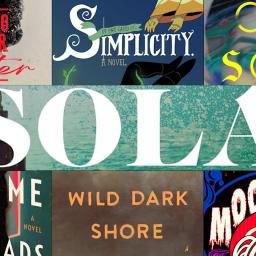 |
by Engadget on (#72DHM)
This was the kind of year that felt 100 years long, so who could blame us for leaning into a bit of escapism? Some of us buried our noses in books in 2025, and thankfully, there were plenty of good reads to get lost in. Here are some of the Engadget team's top picks from the year.Wild Dark Shore by Charlotte McConaghyWild Dark Shore pulls off a magnificent balancing act of telling an intimate, personal story coupled with the backdrop of impending climate disaster. A father and three children are living on a remote island near Antarctica, taking care of a vast seed bank that was part of an abandoned research facility. They're literally trying to stay above water for a few months until they get bailed out from the island along with as much of the seed bank as they can save before it goes under when a woman named Rowan washes up on shore. She survives, is nursed back to health, and starts forming bonds with her rescuers and their mission - but at the same time, she has some unexpected connections to the island and the former research team that lived there that she keeps to herself.The magic of this book is in the way Charlotte McConaghy builds tensions from many sources throughout the book; you feel a lingering sense of discomfort through, waiting for the other shoe to fall even as Rowan gets closer and closer to the family. It's a small-scale story at its heart, but with the backdrop of disaster looming the stakes feel extremely high. And McConaghy is a master at putting these feelings on the page in gorgeous prose. As she showed in her previous work Migrations, she has a real talent for realistically describing near-future climate disasters, but Wild Dark Shore raises the personal stakes in a visceral way. - Nathan Ingraham, Deputy EditorMoonflow by Bitter KarellaThis book is a chaotic and deeply weird rollercoaster ride that repeatedly gave me whiplash, and I loved it. Fair warning, it's not for the weak-stomached. It is horrifying, hilarious, nauseating and somehow a very good time and a very bad time simultaneously. Moonflow is told through dual narratives, one following Sarah, a trans woman and mushroom dealer who has found herself in a desperate situation, and the other following the henchwomen of a deranged cult that's made its home in a cursed forest. After Sarah ventures into these woods in search of the King's Breakfast, a rare mushroom said to grant divine understanding to those who consume it, all hell breaks loose.Karella's writing is immersive, and this is the kind of book you can see, feel, hear and smell, for better and worse. Every person in this book is like a caricature of someone I've crossed paths with at some point in life, and the names of the cult members are just... chef's kiss. Some of them had me howling. It is completely unpredictable - except in those few moments where it seems the author wants you to know exactly where things are going just to make you dread the inevitable. Reading Moonflow was a visceral, unforgettable experience. - Cheyenne MacDonald, Weekend EditorSimplicity by Mattie LubchanskyAnother one about a cult, except this cult rules. I picked up Simplicity knowing nothing about it except that everyone cool on the internet seemed to be praising it, and was excited to discover that it's set near where I live in New York's Hudson Valley, in a future version of the Catskills. And here in the Hudson Valley, it often feels like I'm one or two innocuous decisions away from accidentally joining a cult, so there was an immediate connection. In Simplicity, it's the year 2081 and New York City is a high-tech dystopia run by a billionaire. North of the city, though, various communities have settled off-grid, including a group called The Spiritual Association of Peers.Lucius Pasternak, a trans man, is sent on an anthropological assignment from the mayor to SAP's compound, Simplicity, and it doesn't take long for their uninhibited way of life to start growing on him. But Lucius soon begins to have strange dreams, and a series of violent attacks shakes up the community. Through his mission to understand the people of SAP and later to find and stop the entity that's targeting them, a beautiful story about queerness and identity and belonging and fighting for what's important unfolds. This feels like the kind of book that should be passed around between friends who just get it, and I imagine many readers will feel incredibly seen by it like I did. - C.M.The Buffalo Hunter Hunter by Stephen Graham JonesOr Stephen Graham Jones' Interview with the Vampire. The Buffalo Hunter Hunter blends historical fiction and horror to give us one of the most impactful vampire novels of our time - one that serves as an uncomfortable but necessary reminder of the atrocities committed against indigenous people in the US by white settlers. It begins with the discovery of a crumbling journal that claims to contain the confession of a Blackfeet man-turned-vampire named Good Stab, as told to Lutheran pastor Arthur Beaucarne. What follows is a gutting chronicle of slaughter, heartbreak and revenge. It's a classic in the making. - C.M.Isola by Allegra GoodmanHistorical fiction is how I trick my brain into possibly learning something. And because the endings are set, the author has to hook you into the drama with more than just the peril of an unknown outcome. I fell deep into Wolf Hall even though I knew which heads Henry VIII chopped off. I thought Isola might be similarly gratifying.It tells the story of Marguerite de la Rocque de Roberval, a young noblewoman from France who was intentionally marooned on an island off the coast of Canada in 1542. The story is based on historical records so you know the plot won't adhere to safe formulas, but mon dieu, I was not prepared for how rough things would be for Marguerite.Her troubles began long before she found herself fighting for survival on a wild uninhabited island with brutal winters. From birth, nearly every happiness was undercut by more dominant forces, yet the woman never stopped moving forward. Thankfully, Goodman draws Marguerite's character not as some tired brand of plucky heroine with grit and a wink, but as a perceptive, pragmatic being who also gives in to impulse and doesn't have everything figured out.Isola is beautifully rendered, from the stone chateaus to creaking ships and rough abundance of the island. Despite being set over 400 years ago, nothing feels dated. Human versus universe is an unfair battle, but I rooted for Marguerite on every page - and those pages turned quickly. - Amy Skorheim, Senior Reporter, Buying AdviceOld Soul by Susan BarkerThis was one of the first books I read this year, and it's really stuck with me. Old Soul travels through time and all over the world, across multiple storylines to trace the devastating impact of one mysterious woman who seems to defy the rules of mortality and always leave tragedy in her wake. Barker's writing in Old Soul pulls the reader in and doesn't let go. It's an unsettling slow burn that did a great job of getting under my skin. - C.M.Meet Me at the Crossroads by Megan GiddingsIf a door appeared out of nowhere, would you go through it not knowing what lies beyond or if you'd be able to return? In Meet Me at the Crossroads, seven doors pop up one day around the world, and people are unsurprisingly captivated by them. Regular people tempt fate, the ultra-wealthy plan exclusive excursions through them, religions form around their mystique. Ayanna is a teenager who was brought up in one of these religions. She's also a twin, with a sister named Olivia who she's been separated from after their parents' split. When it comes time for Ayanna to go through one of the doors as part of a ceremony, Olivia makes a last-second decision to go with her. What follows is the aftermath of that decision. Meet Me at the Crossroads is a haunting and emotional journey. - C.M.Woodworking by Emily St. JamesI am a cisgender, white middle-aged man, so the experience of learning and accepting a different gender identity is something I will never fully understand. But Woodworking, the debut novel by Emily St. James, is a hilarious, tragic and ultimately hopeful look at two trans women navigating different moments of acceptance in their lives. Erica is a mid-30s high school teacher who is recently divorced and just figuring out that she's trans, something no one else knows about her at the start. Her student, 17-year-old Abigail, is her opposite: proudly out about her identity in a way that's uncommon and dangerous in her small, conversative town in South Dakota.Their paths intersect, and Abigail ends up in the uncomfortable and somewhat unethical role of helping Erica find herself. After all she's confident and not afraid of who she is - but she's also still a teenager, one dealing with massive trauma of her own. The dual look into these two protagonists, each with sections of the book narrated from their own points of view, gave me a vivid picture of the different challenges, emotions and dangers trans people face. But the unexpected community that develops around both characters plainly shows the value of living as your true self in a way that (hopefully) anyone should be able to relate to. - N.I.This article originally appeared on Engadget at https://www.engadget.com/entertainment/our-favorite-books-we-read-in-2025-160000704.html?src=rss
|
 |
by Andre Revilla on (#72DG4)
LG will present a home robot named CLOiD at CES 2026 in Las Vegas. With humanoid robotics sure to feature heavily at this year's tech conference, LG has teased its home assistant before a full unveiling in January.The company says CLOiD's two articulated arms with five individually actuated fingers are designed to help with a variety of household tasks. However, LG has not yet given a specific example of a task CLOiD can handle. We're also not sure what it looks like, because aside from a couple of very close-up images of CLOiD's hands, LG is keeping what the robot looks like under wraps until the show.LG said CLOiD is part of the company's vision that Zero Labor Home, Makes Quality Time." It said its robot is a step toward a company goal of "freeing customers from the time-consuming demands of housework."CLOiD's chipset is housed in its head, which also sports a display, speaker, camera and a bevy of sensors meant to enable expressive communication. LG says its new robot is powered by its "Affectionate Intelligence" technology and is designed to interact in a neutral, user-friendly way. It's also designed to refine its responses through repeated interactions with a user.CES often plays host to proof-of-concept products that offer a window into the future but may not make it to market. It remains to be seen if CLOiD is simply a booth-side attention-getter or something with real potential. Visitors can see CLOiD handle some real-life scenarios at LG's booth in the Las Vegas Convention Center.This article originally appeared on Engadget at https://www.engadget.com/home/smart-home/lg-will-show-off-a-humanoid-robot-for-household-chores-at-ces-2026-145411218.html?src=rss
|
 |
by Andre Revilla on (#72DEG)
Brazilian regulators have reached a settlement with Apple after a yearslong investigation into the company's App Store fee practices as well as its policies against third-party app stores. As first reported by Brazilian tech site tecnoblog, the nation's Administrative Council of Economic Defense (CADE) said it has accepted Apple's proposed agreement that will address claims of anticompetitive practices.The agreement will allow for third-party payment processing methods for in-app purchases and reins in Apple's anti-steering efforts by allowing links to external websites for transactions. The settlement requires that these payment options be shown next to Apple's own. Apple must also allow third-party app stores to be installed on its devices, though the company is allowed to display warnings to users if they are written in a neutral and objective way.A new fee structure has also been agreed to, with Apple applying no fee if users are directed to outside payment methods in a text-only way. The use of a clickable link or button for an external payment option will incur a 15 percent fee. Purchases made within Apple's App Store will still be subject to a 10 percent or 20 percent commission. Developers using Apple's payment system would also be subject to a 5 percent transaction fee.Additionally a 5 percent "Core Technology Fee" would be levied against all app downloads from third-party app stores. This new structure bears similarities to policy and fee changes made after the EU passed its Digital Markets Act, with Apple allowing third-party app stores and external purchases subject to varying fees.Apple will have 105 days to comply under the new agreement and could face fines of up to $27 million for failure to implement the changes. The iPhone maker has been facing mounting pressure from regulators worldwide over its anti-steering practices and was recently handed a $587 million fine by the EU for violating its Digital Markets Act. Apple is appealing the fine. In the US, Apple has been embroiled in a court battle with Fortnite maker Epic Games over commissions on purchases that take place on third-party payment platforms.This article originally appeared on Engadget at https://www.engadget.com/big-tech/apple-will-allow-third-party-app-stores-and-payment-processing-in-brazil-135114824.html?src=rss
|
 |
by Georgie Peru on (#72DD7)
Losing AirPods happens to the best of us. They're small, they slide into couch cushions and they love disappearing into bags or pockets when you least expect it. Luckily, Apple's Find My system makes it easy to track down misplaced AirPods, whether you dropped the case somewhere or can't find one of the individual earbuds. With the right settings enabled, your iPhone can show the last place they were connected, play a sound to help you hunt them down or even guide you with on-screen directions. Here's how to use Find My to locate lost AirPods and how to track down the left or right earbud if only one has gone missing.How to use Find My to locate AirPodsIf your AirPods are paired with an Apple device linked to your Apple ID, they automatically appear in the Find My app. You don't need to enable this manually, but you do need Bluetooth turned on during regular use so the system can refresh their location.Open the Find My app on your iPhone, iPad or Mac and go to the Devices tab. Your AirPods should appear in the list. If they're online or recently connected to your device, Find My will show their current location on a map. If they're offline, the app will show the last place they were detected, which can help narrow down where to start searching.For many people, this alone is enough to jog a memory. Find My might show your gym, a friend's house or the bus stop where they slipped out of your pocket. If the location seems familiar, head there first and refresh the app once you arrive so it can update if the AirPods reconnect.If Find My says your AirPods are nearby but you still can't see them, you can make them play a locating sound. Tap Play Sound in the device menu and the earbuds will emit a rising chirp that gets louder over a few seconds. This is especially helpful for finding AirPods hiding under blankets, inside bags or behind furniture.Keep in mind that AirPods need enough battery to make noise, and the charging case itself cannot play sound unless you have AirPods 4 (ANC), AirPods Pro 2, or AirPods Pro 3 that support that feature. If nothing plays, try refreshing the app or checking the last location again.AirPods models, like the AirPods Pro (2nd gen) and AirPods Pro (3rd gen) with MagSafe charging cases support Precision Finding. This feature uses the U1 chip inside your iPhone to show a directional arrow, distance estimate and haptic feedback as you get closer. Not all models have this feature, but if yours do, the Find My app will display a Find Nearby button.Follow the on-screen prompts and slowly rotate your phone. The iPhone will show when you're walking in the right direction and tell you when you're close enough to start looking under cushions or inside drawers.How to locate individual AirPodsAirPods have a habit of separating from each other, and losing only the left or right earbud may happen as frequently as misplacing the entire case. One of the most useful features in Find My is the ability to track each earbud individually. Here's how to do it:
|
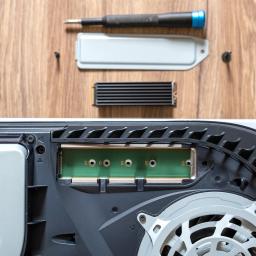 |
by Aaron Souppouris,Igor Bonifacic on (#5NJQF)
Storage fills up fast on a PS5, especially when a single game can take up as much space as an entire last-gen library. Adding moreSSD space is the easiest way to stop playing Tetris with your installs, and once it is set up, your console loads games just as quickly as it does from the built-in drive. It is a small upgrade that makes a big difference if you jump between several titles at once.
|
 |
by Steve Dent on (#72DC3)
Xiaomi just launched its flagship 17 Ultra by Leica phone that may make you feel bad about your current device's cameras. Naturally it's a spec monster, with a 1-inch sensor 50MP f/1.67 main camera and 1/1.4-inch 200MP periscope telephoto camera. But it also offers an interesting new mechanical feature: a manual zoom ring that also activates the camera automatically when you rotate it.Both the regular Xiaomi 17 Ultra and Leica edition come with a Snapdragon 8 Elite Gen 5 SoC with up to 16GB of LPDDR5X RAM and 1TB of UFS 4.1 storage, along with a 6.9-inch 120Hz AMOLED display that can hit up to 3,500 nits of peak brightness. On top of the impressive main and telephoto lenses, they also offer a 50MP ultrawide and a 50MP selfie camera. And battery life shouldn't be an issue, thanks to the 6,800mAh silicon-carbon battery that supports 90 watt wired and 50 watt wireless charging.XiaomiThe 17 Ultra by Leica adds some very, well Leica touches. Those include a two-tone finish, red dot status symbol on front, textured edges and film simulations like Leica's Monopan 50 black and white. As for the zoom ring, Xiaomi says "its rotation [eliminates] the need for tedious screen taps... and can detect displacements as small as 0.03mm." It can also be reprogrammed for functions like exposure compensation and manual focus.Other features unique to that model include a "Leica Moments" 3:2 aspect ratio, special encryption chip, and dual-satellite connection. And as befits a special edition, it comes in a custom box with a lens cap, lanyard, magnetic case and branded cleaning cloth.The one caveat is the price. Where phones for the Chinese market are often cheaper than North American models, Xiaomi's 17 Ultra by Leica and the regular 17 Ultra start at CNY 7,999 ($1,140) and CNY 6,999 ($995) respectively with 512GB or storage and 16GB of RAM - right up there with the latest high-end Pixel 10 and Galaxy 25 models.This article originally appeared on Engadget at https://www.engadget.com/mobile/smartphones/xiaomis-17-ultra-leica-edition-smartphone-comes-with-a-manual-zoom-ring-093502893.html?src=rss
|
 |
by Jeff Dunn on (#6XM62)
If you want to expand the storage of your Nintendo Switch 2, you'll need a microSD Express card. This is not the same as the more traditional microSD cards you may have bought for the original Switch or other gaming handhelds; Express cards are newer, faster and significantly more expensive on average. But they're your only choice, and given how much space certain Switch 2 games chew up, you'll probably have no choice but to get one eventually. Which to buy, though? If you're looking for the best microSD card for the Switch 2 today, we've broken down what you should know before taking the plunge. The best microSD cards for the Switch 2 (aren't all that important) Jeff Dunn for Engadget The Switch 2 is the first mainstream device to require microSD Express for storage expansion, so there aren't many options available to buy just yet. Of the handful of compatible models released thus far, we've now tested seven: the SanDisk microSD Express Card (aka the SanDisk GamePlay microSD Express Card" at Walmart), the Lexar Play Pro, the Samsung microSD Card for Nintendo Switch 2, the Samsung P9 Express, the PNY microSD Express Card, the GameStop Express microSD Card for Nintendo Switch 2 and the Onn microSD Express Card. The first five are made by genuine storage manufacturers, while the GameStop and Onn cards appear to be rebadged versions of other models. We used the 256GB version of every card except for Lexar Play Pro, which was 1TB. After timing these microSD Express cards across a range of Switch 2 games, our advice is simple: Get whichever one is in stock for the lowest price in the capacity you want. They aren't identicallyfast, especially if you want to move a game to the card from the console's internal storage (or vice versa). But the differences in load times and overall performance within actual games are tough to notice unless you have a stopwatch handy. All five cards loaded up the digital version of Mario Kart World, for instance, between 18 and 20 seconds. Each loaded the first Grand Prix race in about 6.5 seconds. Getting to the start screen of Cyberpunk 2077took about 38 or 39 seconds in each case. Loading a save in a particularly asset-heavy area (Jig-Jig Street) then took between 26 and 29 seconds, depending on the card. (The one exception was with the Onn card, which averaged closer to 31 seconds with that particular task, though that's also the cheapest choice.) With Fast Fusion, a smaller native Switch 2 game, the initial load always took six to seven seconds, while each card loaded the first championship race in roughly 4 seconds. It was a similar situation with the Switch 2 upgrade for The Legend of Zelda: Breath of the Wild (using a Switch 1 cartridge): Each card took just over six seconds to get to the start screen, between 19 and 20 seconds to load a save just before the final boss, about 16 seconds to fast travel between Kakariko Village and Korok Forest, and so on. We saw no significant issues with in-game loads when playing each game, either. The SanDisk microSD Express Card and Lexar Play Pro. Jeff Dunn for Engadget All of this suggests that the Switch 2 has a relatively specific target for these cards to hit, and that there may not be much room for one model to leap too far out in front of the others. We'll also note that the console's built-in storage was consistently faster than any external option: The gap wasn't always big, but no card truly outpaced it in any of our tests. Loading that demanding area in Cyberpunk, for example, took about 22.5 seconds on average. So if you want the absolute fastest load times, don't put your game on a card at all. If you need the mental comfort of knowing you technicallyhave the best card available, get the SanDisk microSD Express Card. It had no outliers across our many game loading tests, and it was consistently right near the top when it came to moving games to and from system storage, which means it offers strong sequential read and write performance. Benchmark testing on PC with tools like CrystalDiskMark backed this up, as noted in our broader microSD card buying guide. Putting Mario Kart (a 21.9GB file) on that card took four minutes and 39 seconds on average, which was only second to the Lexar Play Pro by six seconds. It was the fastest to write Fast Fusion (3.5GB), taking an average of 27 seconds across three runs. Only PNY's card was faster to move games back to the console's storage, but that one was far slower at writing games to the card - getting Mario Kart on there took seven minutes and 11 seconds on average. Just note that the 128GB version of SanDisk's card has slower sequential writes than the larger versions, including much slower sustained write speeds (100 MB/s vs 210-220 MB/s). So transferring a game to that particular model will take much longer. The Onn card was also slower to move games back to system storage, taking about 50 seconds more than the SanDisk with Mario Kart and nearly three minutes longer with Cyberpunk. Practically speaking, though, speed differences aren't as important in this case as having lots of space to hold games at a price you can live with. To make things easy, we've listed every Express card we've seen at retailers at the time of writing below. Remember: You want microSD Express, not Extreme," like the branding SanDisk uses for some conventional microSD cards. A microSD Express card will have a big EX" logo printed on it. 128GB
|
 |
by Igor Bonifacic on (#5TFD4)
Sony's latest console may be a few years old at this point, but it's still got plenty to offer - including some of the best games of this generation. Whether you just got a new PS5 or PS5 Pro, or you've had yours for a little while, you may want to give it a refresh of sorts by investing in some new accessories. Luckily, there are tons to choose from. These are the best PS5 accessories we've come across, plus some of the best games you should try out if you haven't already. Best PS5 accessories This article originally appeared on Engadget at https://www.engadget.com/gaming/playstation/best-playstation-5-accessories-140018902.html?src=rss
|
 |
by Rob Webb on (#72D2X)
Setting up a PS5 for a child means you can offer an age-appropriate and safe platform for them to play. Sony made its parental control tools more comprehensive in recent years and they allow families to manage screen time, block unsuitable content, guide online interactions and approve purchases. The process is straightforward once the right menus are in view, but it helps to understand how each feature works before handing over the controller.The system uses individual accounts for each family member, and these accounts determine what a child can access. A parent or guardian assigns restrictions to the child's profile and the console enforces them more consistently than earlier PlayStation systems. The process begins with creating a child account, then linking it to the Family Management section of the adult account, and finally adjusting controls on the console itself.Create a child account through Family ManagementA child account is required before you can use any parental controls. This account is linked to the family manager's PlayStation account and cannot be converted into an adult account until the child reaches the appropriate age under local regulations.From the PS5 Home screen, navigate to Settings, Family and Parental Controls then choose Family Management. The system will request the family manager's password before any changes can be made. Select Add Family Member and choose Add a Child. The console generates a QR code that opens a secure PlayStation webpage on a phone or browser. This page guides the setup process and ties the new account to the family group.The form asks for the child's date of birth first. Sony uses this to assign default age restrictions and to determine which features are allowed. A small credit card charge may be requested to verify the adult's identity. The next steps involve entering an email address for the child, creating a password and selecting basic settings for content access, communication and spending. The child account must then be verified through a link sent to the provided email address. This ensures the account can use PlayStation Network features including any future purchases through the PlayStation Store.Once complete, the new profile appears in the Family Management list on the PS5. This profile is now ready for fine-tuning.Manage parental controls on the consoleThe PS5 keeps all parental controls in Family and Parental Controls within the main Settings menu. This section is organized into Playtime Settings, Content Restrictions, Communication and User-Generated Content and Spending controls. Each area can be adjusted separately for every child account in the family group.How to set limits on playtimePlaytime controls help set boundaries for gaming sessions. Select the child's profile, then open Playtime Settings. Limits can be set by total daily hours or by specific time windows. The console can be configured to notify the child when time is nearly up, or to log them out automatically once the limit is reached. These settings apply across the child's account, so they remain active even if the child switches between PS5 consoles in the same household.Parents can choose how strictly the system enforces these rules. For example, the console can continue to display warnings without blocking gameplay or it can stop activity when the allotted time ends. Playtime reports can also be viewed through the family manager's PlayStation account or the PS App.How to restrict content based on age ratingsSony's content filters are based on age ratings from the ESRB in the United States and equivalent regional boards in other countries. In Family Management, select the child's profile and then select Parental Controls. Here, parents can set an age level for games. Titles above this level will not launch without approval from the family manager.Blu-ray and DVD content can also be restricted and the system browser can be disabled entirely. If the family uses services that stream movies or TV shows through the console, those apps often apply their own content filters, but the PS5 can serve as a first line of control.EngadgetHow to manage communication and online interactionsOnline communication can be limited to prevent unwanted contact. In Parental Controls, select Communication and User-Generated Content. This area controls messaging, voice chat, profile sharing and the ability to see or share player-created media such as screenshots and video clips.Online play can also be adjusted. For younger kids, it may be helpful to block online multiplayer entirely until they better understand online etiquette and safety. For older children, communication can be limited to friends only. The PS5 respects these limits across all supported games.How to set spending limits for purchasesA child account cannot use payment cards directly, but it can spend funds from the family manager's wallet. Spending limits can be set in the child's profile under Family Management. Parents can choose a monthly spending cap or block purchases altogether. Any attempt to exceed the limit requires approval from the family manager.This feature covers games, add-ons, subscriptions and in-game currency. It ensures surprises on the credit card are less likely, especially in titles that promote quick digital purchases.How to sign your child into the PS5Once controls are set, the child can be added as a user on the console. Return to the home screen and select the user icon to switch users. Choose Add User, then select Get Started. Sign in using the child account's email address and password.The console guides the profile setup process and prompts for an online ID, avatar and privacy preferences. These steps help personalise the child's space on the PS5. The system may request a locally created passcode that prevents access to parental controls without the family manager's approval. This passcode should be unique and not shared with the child.After setup is complete, the child will see a version of the PS5 tailored to the restrictions applied. Games that exceed the assigned age rating will appear with a lock icon and the console will block any actions that the family manager has limited.Use the PS App and PlayStation's online tools for ongoing managementPlaytime and permissions can be managed remotely through Sony's PS App or the PlayStation website. This makes it easier to adjust rules without taking over the TV. The app also provides notifications when playtime is running low or when the child attempts to access restricted content.Sony's Family Management tools synchronise across devices. Changes made from a phone appear on the PS5 within seconds. This helps maintain consistent rules, especially in homes with more than one console.A child-ready PS5 is more than a restriction tool. It creates a safer environment for learning how to navigate digital spaces, interact with friends and handle screen time. Sony's updated controls take much of the pressure off parents by enforcing rules in predictable ways that are difficult to bypass. Once everything is configured, the child can enjoy the console's library while staying within the boundaries that support healthy gaming habits.This article originally appeared on Engadget at https://www.engadget.com/gaming/playstation/how-to-set-up-a-ps5-for-a-child-160039866.html?src=rss
|
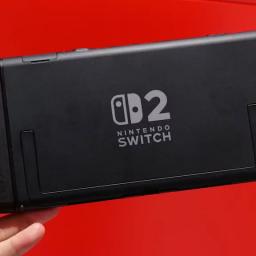 |
by Georgie Peru on (#72D09)
Upgrading to the Switch 2 is a big step forward, thanks to the larger screen, new features and improved performance. But shifting to a new console naturally raises the question of what happens to all your games and save data on the one you already have. Thankfully, Nintendo has built a clear System Transfer process that lets you move your account, digital purchases, save files and other key data from your original Switch to the Switch 2. If you prepare ahead of time, you can be back to playing your favorite titles on new hardware in minutes.We'll walk you through everything you need to know, including what transfers, how to start the process and what to check once you're set up.Before you transfer: A quick checklistRunning through these steps first will save you time later:
|
 |
by Liz Kocan,Danica Creahan on (#72CTN)
Christmas Day famously belongs to football. This Dec. 25, there are three NFL games to watch: the Dallas Cowboys vs. Washington Commanders, the Detroit Lions vs. the Minnesota Vikings and the Denver Broncos vs. Kansas City Chiefs. Here's what you need to know about Thursday's football slate, and the rest of the Week 17 schedule. How to watch the NFL Christmas Day games: Date: Thursday, Dec. 25, 2025 Start times: 1 PM ET, 4:30 PM ET, 8:15 PM ET TV channels: N/A Streaming: Netflix, Prime Video 2025 Christmas Day NFL game slate: Thursday, Dec. 25, 2025
|
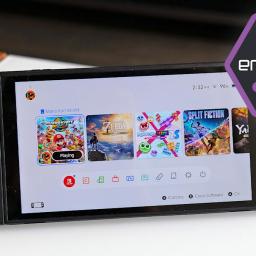 |
by Engadget on (#6Z81X)
One of the best things about the Switch 2 is how familiar it feels if you have used any previous Switch console. You can still move between handheld and TV play without thinking about it, and most of your favorite games come along for the ride. Nintendo's compatibility page highlights the rare titles with quirks, while its transfer guide helps you bring over your data so you can pick up right where you left off.
|
 |
by Ian Carlos Campbell on (#72CPR)
Starting at around 1PM ET on December 24, Steam experienced an outage that impacted users ability to access the game store and play games online. Valve didn't acknowledge the outage publicly, but SteamDB's unofficial Steam Status page reported that the Steam Store, Steam Community, and Steam Web APIs were all offline.DownDetector received over 6,000 outage reports around 1:15PM ET, and Steam was also inaccessible from Valve's mobile apps. The outage appears to have affected APIs for Valve's online games, like Team Fortress 2, Dota 2 and Counterstrike 2, as well.By around 4PM ET, Steam itself had begun to rebound, and as of 6PM ET, the platform had largely recovered, with the main PC, mobile and Mac clients broadly fully functional, but ocassionally erroring out. There are still parts of the service that are extremely sluggish and, according to SteamDB, many of Valve's online games are down or only partially functional. Upon checking at 4AM on December 25, all services seem to have been restored. The Steam Web API, Store and Community are working normally, and all games are running as usual.Steam's last major outage was in October, when the store and online services were unavailable for an hour. Earlier in September, the launch of Hollow Knight: Silksong temporarily took down Steam, the Xbox Store and Nintendo's eShop due to how many people tried to download the game at the same time.Update, December 25, 2026 4:23AM ET: This story has been updated to noted that Steam services have been restored.Update, December 24, 6PM ET: This story has been updated to note which Valve offerings are currently functional and when they recovered.This article originally appeared on Engadget at https://www.engadget.com/gaming/pc/steam-and-valves-online-games-are-partially-down-191033988.html?src=rss
|
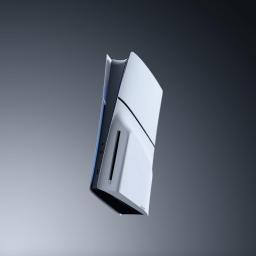 |
by Lawrence Bonk on (#72CPS)
Back in November, Sony started selling PS5 consoles at a $100 discount as part of a Black Friday/Cyber Monday promotion. The deal officially sunsets at 3AM ET, so now is a good time to bite the bullet on a gaming console given that prices aren't likely to go down anytime soon. You can pick up a regular disc-based PS5 for $450 and a digital model for $400. The beefy PS5 Pro is available for $650. All of these deals are active on Amazon, but also directly from Sony. If the costs here still sound a bit high, that's because Sony raised console prices by $50 back in August. In other words, these $100 discounts are pretty much $50 discounts when factoring in that recent increase. Still, cheaper is cheaper. This puts the digital PS5 at the same price as an Xbox Series S and the disc-based version at the same price as a Switch 2. Both standard PS5 configurations won't arrive until December 28. The PS5 Pro, however, is available for same-day shipping if you're jonesing for one last holiday gift. The PS5 has a fairly large stable of exclusive titles made by Sony-owned studios. These include games like Horizon Forbidden West, Astro Bot, Death Stranding 2 and Ghost of Yotei. This article originally appeared on Engadget at https://www.engadget.com/gaming/playstation/todays-the-last-day-to-get-100-off-the-ps5-and-ps5-pro-181454333.html?src=rss
|
by Amy Skorheim on (#6A14K)
Price hikes, media consolidation and contract disputes that turn channels dark have made live TV streaming services feel a lot more like cable. But, for most people it's still a better deal to cut the cord. For sports fans and news junkies, there's still no better option than one of the best live TV streaming services. We tried all the major players and currently recommend YouTube TV for most people. But we also spelled out just what you get from other providers (along with what we think about them) so you can decide for yourself.
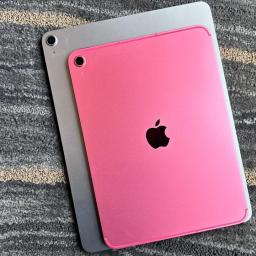 |
by Rob Webb on (#72CKR)
Creating a child-friendly iPad takes a few extra steps, but Apple's tools make the process relatively straightforward. From creating a child's Apple ID to adjusting Screen Time and privacy settings, you can shape how your child uses the device and protect them from inappropriate content. The process varies slightly depending on whether the iPad is new or already in use, but the principles are the same: set up a managed account, connect it to Family Sharing and fine-tune the controls that keep your child's digital space safe.Create an Apple ID for your childEvery kid using an iPad should have their own Apple ID. This allows you to manage their account through Family Sharing and gives them access to features like iCloud, the App Store and Messages under your supervision. Apple requires parents to create accounts for children under 13, which can be done directly from your own device.Open the Settings app on your iPhone or iPad, tap your name at the top and select Family. Tap Add Member, then Create Child Account, and follow the onscreen prompts. You'll need to provide your child's name and birth date, along with parental consent using your own Apple ID password. Once created, the account is automatically added to your Family Sharing group.If your kid already has an account, you can invite them to join your Family Sharing setup instead. On the iPad, go to Settings > Family > Add Member, then select Invite People to send a request to their existing Apple ID email address. When they accept, you'll be able to manage parental controls from your own device.Add your child to Family SharingFamily Sharing brings all your family's Apple devices together under one umbrella. It lets you share subscriptions, purchases and iCloud storage, while giving you oversight of your child's activity. The Ask to Buy feature, for example, requires your approval before your child can download apps or make in-app purchases, helping to avoid surprise charges.To enable Family Sharing on your iPad, go to Settings > [your name] > Family, then tap Add Member if your child isn't already added. You can manage shared purchases, location sharing and Screen Time settings from here. Linking devices through Family Sharing also makes it easier to locate a lost iPad and maintain consistent restrictions across all your family's devices. For broader setup advice, see Engadget's guide on how to set up a phone or tablet for a child.Set up Screen Time and parental controlsOnce your child's account is linked, you can use Screen Time to manage how the iPad is used. Screen Time is found under Settings > Screen Time, and it lets you set time limits, restrict certain apps, and monitor usage reports.When first opening Screen Time on your child's iPad, tap This is My Child's iPad. You'll be prompted to create a unique Screen Time passcode. This passcode is different from the iPad's unlock code and prevents your child from changing settings without permission, so make sure you remember it. From here, you can configure several key features.Downtime allows you to block all but essential apps and calls during certain hours, such as bedtime or homework time. App Limits sets daily time limits for categories such as games, entertainment or social networking. You can also set Communication Limits to control who your child can contact throughout the day and during Downtime, which is useful for if you only want them to message family members or trusted friends. The Always Allowed section lets you choose essential apps, such as Messages or educational tools, that remain accessible at all times.You can adjust these settings from your own device if your child is part of your Family Sharing group. Screen Time reports provide detailed insight into how the iPad is used, so you can see which apps are used the most and make adjustments as needed.Enable Content and Privacy RestrictionsContent and Privacy Restrictions offer finer control over what your kid can and cannot do with their iPad. To enable them, go to Settings > Screen Time > Content & Privacy Restrictions, and toggle them on.Within this menu, you can manage App Store purchases and downloads, disabling in-app purchases or preventing your child from installing or deleting apps. You can also filter explicit content in Apple Music, TV, and Books, and apply web restrictions in Safari to limit adult content. Under Web Content, choose Limit Adult Websites or specify certain sites that are allowed or blocked.Privacy controls extend beyond content. You can manage location services, camera and microphone access and other sensitive permissions. For example, turning off location sharing in certain apps can help safeguard your child's privacy. You can also prevent changes to accounts, passcodes and cellular settings, ensuring that restrictions remain consistent.Fine-tune privacy and safety settingsBeyond Screen Time, Apple includes additional tools to make iPads safer for children. In Safari, you can enable SafeSearch to filter explicit results in search engines. Restrict AirDrop under Settings > General > AirDrop to limit sharing to Contacts Only or turn it off completely, reducing the potential for exposure to unsolicited files.Messages includes a Communication Safety feature that uses on-device machine learning to detect sensitive images. When enabled, the iPad will blur images that contain nudity and offer guidance before the child can view them. You'll find this under Settings > Screen Time > Communication Safety. It works entirely on the device and doesn't send data to Apple, preserving privacy while offering extra protection.If your child uses Game Center, you can limit multiplayer games, profile visibility and the ability to add friends. These small adjustments can prevent unwanted social interactions or exposure to inappropriate content in online games.Use Guided Access for younger childrenFor younger children or toddlers, Guided Access can keep them focused on a single app and prevent them from accidentally navigating elsewhere. To enable it, open Settings > Accessibility > Guided Access, then toggle it on and set a passcode.Once it's active, open the app you want your child to use and triple-click the top button (or the Home button on older models). Guided Access locks the iPad to that app until you end the session with your passcode. You can disable hardware buttons or touch input areas to avoid navigating elsewhere in the app or accessing playback controls. This feature is ideal when you want your child to watch a video or use an educational app without interruption.Keep everything up to dateAfter initial setup, it's important to revisit these settings occasionally. Children's needs change as they grow, and Apple regularly adds new parental features with each iPadOS update. Keep the iPad updated by going to Settings > General > Software Update, and review restrictions periodically to ensure they still fit your child's age and usage patterns.Setting up an iPad for your child isn't just about managing screen time or blocking certain apps. It's about creating a space that encourages safe exploration while maintaining healthy boundaries. With Apple's parental tools, you can find the right balance between freedom and supervision, making the iPad a secure and educational part of your child's digital world.This article originally appeared on Engadget at https://www.engadget.com/mobile/tablets/how-to-set-up-an-ipad-for-a-child-160001671.html?src=rss
|
 |
by Andre Revilla on (#72CHS)
A pro-Russian hacker group has come forward as the perpetrator of a DDoS attack on the French national postal service La Poste that took place on December 22, according to Reuters. The distributed denial-of-service attack took central computer systems at La Poste entirely offline and caused major disruptions in package deliveries just days before Christmas.Reuters reported that the cyberattack on La Poste was still not fully resolved as of Wednesday morning. While regular letters were not affected, postal workers were unable to track packages and online payments through La Banque Postale, the service's banking division, were also disrupted.The group, known as Noname057, has taken responsibility for or been accused of cyberattacks across the globe. Though attacks have occurred in over a dozen nations, the group has mostly targeted Ukraine as well as Ukraine-friendly nations.Europol, the EU's law enforcement agency, launched an extensive operation against the group this summer. The US Justice Department has also been involved in actions against the hacker group.This article originally appeared on Engadget at https://www.engadget.com/cybersecurity/pro-russian-hacker-group-claims-responsibility-for-ddos-attack-on-french-postal-service-140015323.html?src=rss
|
 |
by Steve Dent on (#72CHT)
I've always wondered what it would be like to own a plug-in hybrid, and recently, fate handed me that opportunity. On a recent trip to Vancouver, I rented a 2024 Toyota Prius Prime for nearly two months - the ideal scenario to try out North America's most popular PHEV.My experience with the Prius PrimePreviously, the words "Prius" and "sexy" were rarely used in the same sentence. However, I think the wedge-shaped Prius Prime introduced for 2023 is much sexier than its frumpy predecessors. The sleek shape also pierces the wind better to improve efficiency. It's lower to the ground than before, though, which can make entry tough for taller or older people.I was comfortable in the Prius Prime once seated, even though the materials and options aren't quite as luxurious as other PHEVs sold in the US. On two 10-hour highway drives up to northern Canada I never felt sore (or cold) in the well-bolstered, heated seats. However, visibility wasn't the greatest due to the low seating position and thick front pillars that occasionally blocked my view of traffic.Steve Dent for EngadgetWith its wraparound dash and 8-inch touchscreen, the interior is reasonably high-tech but not to the standard of some EVs I've tried recently. It came with wireless CarPlay and Android Auto support that gave me seamless streaming entertainment on long highway stretches. The driver safety features (lanekeeping, adaptive cruise, automatic braking and more) also boosted my confidence in Vancouver's gnarly traffic. The Prius Prime doesn't offer true one-pedal implementation, but it has a mode that's close to that.With a two-liter 150 HP gas motor and 161 HP electric motor (net 220 HP combined), the 2024 (fifth generation) Prius Prime has a whopping 100 more horsepower than the previous model. The electric drivetrain is supplied by a 13.6kWh battery (10.9kWH usable) that takes four hours to charge at 240 volts, or double that with 120-volt household electricity. That means you can juice it fully overnight, but it doesn't have DC fast-charging for speedy power-ups on longer trips. The EPA electric range is 44 miles, 19 more than the fourth-gen Prius.It accelerated surprisingly well (from 0 to 60mph in 6.7 seconds) and was agile, but had a fair amount of body roll since it's not designed for the race track. Still, considering the Prius's reputation as a staid hippie econobox, the new model was downright sporty. I enjoyed driving in the all-electric mode much more than the hybrid mode, though - it was quieter and smoother, with lower noise levels and vibration.So, how far was I able to drive on that electric motor alone? On the highway at about 65 MPH, I eked out 30 miles and just over 40 miles in the city. On one trip, I drove from the city center to a suburb 30 miles away and made it there and partially back on a full charge. On another voyage, I was able to drive back and forth between the east- and west-most points of Vancouver (13 miles) - a typical commute for many city-dwellers - with about a quarter charge to spare.Steve Dent for EngadgetWith consistent charging, my fuel consumption over a two week period (averaging 25 miles per day) was about a quarter of a tank or around $7.50. In terms of electricity, I used nearly 70.5kWh during that time at $.085/kWh, for a total of $6. All told, I spent $13.50 for gas and electricity over 350 miles of mixed driving, so the Prius Prime was clearly cheap to operate.For longer trips, it's still as inexpensive as it gets for a gasoline-powered vehicle, thanks to the efficient ICE motor and hybrid system that's among the best in the industry. With a full battery charge and tank, I set out on a 547-mile drive and travelled 470 miles before stopping for gas, with a quarter tank to spare. That fill-up cost around $25.The true savings and the problem with plug-in hybridsThe timing for my test of this car was ideal. In October, I spotted a European study concluding that PHEVs aren't as economical as expected over a large sample size. Engadget's article about that stirred up some passion among owners and potential buyers, so I wanted to compare my experience with points in the study.First, let's see if a PHEV is worth the extra money compared to a regular hybrid. My calculations are for the average US buyer and don't take state or federal clean air rebates into account.When I chose to rent a "compact" car, Avis assigned me a mid-range Prius Prime XSE - a model that lists at $37,320 but typically sells for $34,590, according to Edmunds. That suited me well as it only lacked a few features of the high-end XSE Premium, notably the larger 13.2-inch infotainment display and solar roof option. A fully equipped 2026 XSE Premium model with those features costs $41,665.Steve Dent for EngadgetSince Toyota also makes a regular hybrid Prius, that vehicle offers an ideal comparison. The equivalent Prius XTE model has a list price of $31,995 in a similar configuration, making it $5,325 cheaper than the Prius Prime XSE.The average US driver covers 13,662 miles per year and gasoline currently has a median $3 per gallon price. Over that distance, a non-PHEV Prius driver could expect to burn 273 gallons at 50 MPG (EPA combined) in a year, spending $819 on fuel.A Prius Prime driver, on the other hand, would use 70 to 85 percent less fuel by current EPA or WLPT estimates. If we generously take the high end of those numbers at 85 percent, that cuts fuel costs to $160. That would require using about 2,500 kWh of electricity, though, so at an average US price of $0.18/kWh, that amounts to $450, for a total of $610 (gas plus electricity). That means you'd save just $209 in a year, or $2,090.00 over 10 years - not enough to justify the extra price. (Fuel and electricity prices, usage and other factors vary by region and can have a big impact on those figures.)It could be even worse than that, according to a European automotive thinktank called Transport & Environment (T&E). After gathering real-world OBFCM data from 800,000 vehicles, they determined that PHEVs only run in all-electric mode 27 percent of the time, rather than 84 percent as estimated by Europe's WLPT standard. As a result, plug-in hybrids in Europe emit five times more emissions and cost users 500 ($586) more per year than previously thought. Those figures are likely similar in the US.Steve Dent for EngadgetHow could regulators be so wrong about this key data? The first, obvious reason is that they underestimated how often people charge their vehicles. With their relatively short range, plug-in hybrids often need a full charge to get through the day in electric-only mode - but many people aren't doing that.Why? One reason may be a lack of easy charger access away from home. I found them to be difficult to find and use, often requiring a sign-up or app rather than just letting me tap a credit card (I'm looking at you, ChargePoint, Flo and Switch Energy). It can also be more expensive than just buying gasoline, since many companies charge triple or more the market rate for electricity. Another factor is that drivers of company or fleet PHEVs charge their vehicles less often than private owners.There's one additional and especially pernicious reason: The ICE engine often kicks in when PHEVs are supposedly running in all-electric mode, particularly with heavier sedans or SUVs. That's because the electric motors alone aren't powerful enough for maneuvers like passing.Larger batteries can boost all-electric usage, but only to a point. Beyond 45 miles of range, emissions actually increase. The reason is simple: "Long-range PHEVs are the heaviest in the dataset, averaging 28 percent more mass and 33 percent more engine power than the group just below," T&E wrote.Steve Dent for EngadgetOverall, I enjoyed my time with the Prius Prime and found it to be fun, practical and cheap to drive. It's the most economical PHEV because it has excellent electric range and enough power that the ICE engine rarely needs to kick in. At the same time, it offers the highest EPA mileage rating of any non-EV sold in North America. If I were in the market for a new vehicle, the Prius Prime would be high on my list.However, I also learned that PHEVs aren't reducing emissions or saving buyers as much as regulators and manufacturers have promised. Governments are to blame for much of that, as they overestimated all-electric use in PHEVs and failed to support the charging infrastructure needed to make them practical.Responsibility also falls to automakers and buyers. Consumers want SUVs, but manufacturers aren't making the electric motors in PHEVs powerful enough to run all the time in EV mode or offering fast DC charging. At the same time, drivers are failing to charge their vehicles consistently. Until those issues are solved, in my experience plug-in hybrids are a poor substitute for EVs in terms of emissions and a less economical choice than regular hybrids.This article originally appeared on Engadget at https://www.engadget.com/transportation/toyotas-prius-prime-saved-me-gas-money-but-probably-not-the-environment-133027378.html?src=rss
|
 |
by Rob Webb on (#72CG1)
Digital game codes remain one of the simplest ways to add new titles to a Nintendo library. The Nintendo Switch 2 handles code redemption in a familiar way, building on the same process used on the original Switch. You can redeem a download code directly from the eShop on the console, or through a browser on a phone or desktop. Both routes link the purchase to the same Nintendo Account so the redeemed title appears on any compatible device tied to that account. The process is quick once you know where to look. Here is how to redeem game codes on Switch 2 through the console and online.Things to know before you startA Nintendo Account is required and the Switch 2 must be connected to the internet for on-device redemption. Most codes contain sixteen characters made up of letters and numbers. The characters are displayed on a physical card, on a receipt or in a confirmation email from a retailer. The characters should be entered exactly as supplied. Each code can only be redeemed once and becomes linked to the Nintendo Account used during the process.How to redeem a game code on the Switch 2 via the eShopRedeeming a code through the Switch 2 itself is the most direct approach because the download begins as soon as the code is accepted.Start on the Switch 2 home screen and open the Nintendo eShop icon. The console will prompt you to choose the user profile that should receive the content. Each user profile has a separate eShop purchase history, so pick the correct one before moving on.Once the eShop loads, look for the Redeem Code option in the main menu. On the Switch 2, this appears in the left navigation panel alongside the store's standard browsing categories. Select Redeem Code to open a screen with an input field and the on-screen keyboard.Enter the sixteen-character code carefully. Codes may contain similar-looking characters particularly when numbers and letters appear in the same sequence. After entering the full set of characters select OK to move forward. The system checks the code and shows a confirmation page with the game or content tied to it.If the code is valid, select Redeem to finish the process. The game will appear on the home screen as soon as the redemption is complete. A progress bar shows the download status until the installation finishes. If the game includes a Switch and Switch 2 version, the system will prompt you to choose which version to download.If the game does not begin downloading head to the All Software view or the Download Management screen to confirm the status. The redeemed title should be visible with either a queued or active download.How to redeem a Switch 2 code onlineNintendo also supports online redemption through its digital store, which is useful if you are away from the console or prefer to type the code on a full keyboard. The redeemed title will still appear in your account's purchase history and can be downloaded later from the Switch 2.Open a browser on a phone, tablet or computer and go to the Nintendo Account login page. Sign in using the account linked to your Switch 2. Once logged in navigate to the code redemption page for the Nintendo eShop. This page contains a text box where you can paste or type the code.Enter the code exactly as provided and select Next. A confirmation screen appears with the game details. Select Redeem to finalize the action. The content is now tied to your account and ready to download on your console.If the console is in sleep mode and has auto downloads enabled, the game may start downloading immediately. Otherwise open the eShop on the Switch 2 later and check the Download Management section for your queued title.What to expect after redeeming a codeEvery redeemed game becomes part of your Nintendo Account's digital library. This applies across devices tied to the same account, which means that games purchased on a Switch or a browser will still appear when you sign in on a Switch 2. If the game supports cloud backup through Nintendo Switch Online, save data will sync once the game is installed.Some games offer separate versions for the original Switch and Switch 2. When this applies, you'll be asked to pick which version you want to download. The choice does not usually affect your ownership but it determines which software build is installed on the device.If a code fails, Nintendo advises checking that the characters are entered correctly and confirming that you are using a download code rather than a control number, which often appears on the same card. Codes for DLC downloads require the base game on the destination console. Region restrictions also apply so the code must match the region of your Nintendo Account's eShop.Why Switch 2 uses the same redemption system as the original SwitchThe Switch 2 keeps the familiar eShop structure that users have relied on since the original console. Keeping this process consistent simplifies the transition for families with multiple consoles and reduces the friction of carrying existing purchases forward. Nintendo Accounts continue to serve as the backbone for digital ownership which makes it easy to claim a code on one device and access the game on another.The updated interface on the Switch 2 adds clarity to navigation but code redemption still works the same way on both platforms. This continuity ensures that retailers can distribute standard sixteen-character download codes and users can rely on simple steps to activate them.This article originally appeared on Engadget at https://www.engadget.com/gaming/nintendo/how-to-redeem-game-codes-on-the-nintendo-switch-2-130059847.html?src=rss
|
 |
by Steve Dent on (#72CG2)
Ahead of CES 2026, Samsung has unveiled a number of impressive gaming monitors that flaunt 3D and very high refresh rates. The headliner is the 32-inch Odyssey 3D, "the world's first 6K display with glasses free 3D," according to Samsung. Along with the high resolution, it offers a 165Hz refresh rate (boosted to 330Hz through Dual Mode), along with a 1ms GtG response time. Optimized 3D effects that enhance terrain, distance and object separation "beyond 2D" will work with featured games like Stellar Blade and The First Berserker: Khazan," according to Samsung.Another model, the 27-inch Odyssey G6, brings refresh rates to a new level. It's the world's first 1,040 Hz monitor through Dual Mode and offers native QHD support up to 600Hz "to help players track targets and see fine details during high-speed movement," Samsung claims. It can provide instant performance boosts and is AMD FreeSync and NVIDIA G-Sync compatible.SamsungIf it's OLED you want, Samsung has that covered as well with the 32-inch Odyssey OLED G8. It pairs a 4K QD-OLED panel with a 240Hz refresh rate, while offering glare-free viewing and VESA DisplayHDR True Black 500 certification, though brightness is limited to 300 nits. It's DisplayPort 2.1 and HDMI 2.1 compatible with up to 80Gbps bandwidth, while supporting both AMD FreeSync Premium Pro and NVIDIA G-Sync.Finally, Samsung introduced two other new high-resolution Odyssey G8 models as well. The first is the 32-inch G80HS model with 6K resolution at up to 165Hz and the other is the 5K, 27-inch Odyssey G8 with native support up to 180Hz and Dual Mode boosting that to 360Hz in QHD. There's no word on pricing yet for any of these models, but we'll likely learn that early next year.This article originally appeared on Engadget at https://www.engadget.com/computing/accessories/samsungs-latest-odyssey-gaming-monitor-has-a-32-inch-6k-screen-with-glasses-free-3d-130051748.html?src=rss
|
 |
by Mariella Moon on (#72CG3)
The Trump administration has issued travel bans that prohibit five European tech researchers, including one former EU Commissioner, from entering the United States. For far too long, ideologues in Europe have led organized efforts to coerce American platforms to punish American viewpoints they oppose. The Trump Administration will no longer tolerate these egregious acts of extraterritorial censorship," said US Secretary of State Marco Rubio.That official is Thierry Breton, the former European Commissioner for Internal Markets and Digital Services, who Sarah Rogers called the mastermind" of the Digital Services Act. Rogers, the Under Secretary of State, said Breton threatened Elon Musk about ongoing formal proceedings for X's noncompliance with illegal content" and disinformation" under the DSA just before his meeting with President Trump. The administration has also banned Imran Ahmed from the Center for Countering Digital Hate (CCDH), who apparently called for American anti-vaxxers to be deplatformed. One of those people is Robert F. Kennedy, Jr., who's now the US Secretary of Health.Clare Melford from the UK-based Global Disinformation Index has also been banned. Her group monitors online platforms for hate speech. Anna-Lena von Hodenberg and Josephine Ballon from German organization HateAid, have been banned, as well. HateAid flags hate speech online for the EU under DSA rules.As The New York Times notes, these travel bans emphasize the administration's close relationship with internet and tech companies, which would benefit from having DSA rules loosened or abolished. The Global Disinformation Index called the travel bans an authoritarian attack on free speech and an egregious act of government censorship." Meanwhile, von Hodenberg and Ballon said the bans mark a new escalation. The US government is clearly questioning European sovereignty," they said.This article originally appeared on Engadget at https://www.engadget.com/big-tech/us-bans-former-eu-commissioner-and-others-over-social-media-rules-121804097.html?src=rss
|
 |
by Valentina Palladino on (#6V3H8)
If you've been shocked by how much you spend on streaming services lately, you're not alone. Companies like Netflix, Disney, HBO Max and others have been consistently raising prices to the point where you may question if streaming is even worth it anymore. We at Engadget still think it is, but we also think you should be smart with your money - and that's where streaming deals come in. Yes, it is possible to get discounts on services like Peacock and Paramount+, even if those deals aren't as common as a sale on AirPods. If you're looking to save money and still stream all of the content you want, Engadget can help by laying out the best streaming deals you can get right now, how you can save with bundles and everything you should know before paying for yet another streaming service. Best streaming deals True streaming deals can be hard to come by. Most often, they'll pop up during the Black Friday shopping period. On occasion, we'll see them sparingly throughout the year and they usually take the form of a discounted monthly or annual rate for a limited period of time. Also, true streaming deals are typically on the ad-supported versions of a service, but once in a while you'll find a unicorn of a deal on a tier that has ad-free viewing. If you're able to wait for a deal before subscribing to a streaming service, we recommend doing so. You'll save money upfront and in the long run, and you also have the option to cancel your subscription before the price goes back up to the normal rate. ESPN Unlimited bundle - $30/month with Disney+ and Hulu for free for one year: Sports fans can sign up for the new ESPB Unlimited bundle at the standard $30-per-month rate, but for a limited time, you can get Disney+ and Hulu (with ads) included in that price for free. The trio bundle would typically cost you $36 per month, so overall, you're saving $6 per month for one year, for a total of $72 in savings. Philo Core - $25 for your first month ($8 off): Our pick for the best cheap live TV streaming service, Philo offers more than 70 channels in its Core tier, plus access to HBO Max (with ads), AMC+ and Discovery+. After your first month, the subscription will auto-renew at the standard $33-per-month rate. Audible - three months for $3: For literally $1 per month, you can get access to Audible's enormous library of published audiobooks, podcasts and Audible Originals (which can be anything from never-before-heard books to live performances). It's only three months, after which you'll have to cancel or renew at the regular price, but an audiobibliophile can cram a lot of listening into 90 days. Crunchyroll - $67 for one year ($13 off): Anime fans can get one year of Crunchyroll access for less right now. The Fan tier is down to $67 for the year, while the Mega Fan tier is on sale for $100 for one year. Both tiers give you ad-free access to the streaming service, but you'll get offline access and up to four simultaneous streams with the Mega Fan option. Note that this deal does not include access to Crunchyroll Manga. Starz (one year) for $12 ($58 off): Pay upfront for one year and you can get more than $40 off a Stars annual subscription. There's a month-to-month option too, which costs $3 per month for the first three months if you don't want to commit to the full year. Either option gives you access to the entire Starz TV and movie library with offline viewing and no ads. Spotify Premium Individual - four months for free ($48 off): This is our favorite music streaming service for podcasts and social features. The Premium Individual plan lets you listen ad-free and skip songs at will. You can also organize your listening queue and download content for offline listening. Just be aware, your subscription will auto-renew at the end of the trial period. So if you don't want to be on the hook for the $12 monthly fee, set a reminder to cancel and go back to the free version. Amazon Music Unlimited - three months for free ($36 off): Amazon's own music streaming service is now free for three months, for new subscribers only. With it, you get access to 100 million songs with no ads, many podcasts and some audiobooks from Audible as well. Fubo Pro for $55/month for the first month ($30 off): Fubo has introductory discounts on most of its packages, and the Pro package is the least expensive plan currently listed. It offers access to 224 channels, unlimited cloud DVR and up to 10 simultaneous streams. It even includes regional sports content from the NHL, MLB and NBA. DirecTV starting at $50/month for one month (up to $40 off): All of DirecTV's signature packages are up to $45 off right now for your first month when you sign up. If you opt for the base "Entertainment" package, you'll spend $50 for the first month and get access to over 90 channels, including many local stations as well as ESPN, ESPN 2 and Fox Sports 1. You'll also be able to watch on the go with the DirecTV mobile app. Streaming bundle discounts There's more consolidation happening now than ever before in the streaming space, and that means there are more streaming bundle options. These bundles offer you access to more content with one subscription price, but those prices are typically higher than paying for a single service by itself (obviously). It may be tempting to just get the bundle, but if only one of those services in the bundle speaks to you, you'll spend less overall by just paying for the single service. Speaking of a deep love for a single streaming service: if all of your favorite shows are on Peacock or the latest releases on HBO Max consistently bring you joy, consider paying for one year upfront. Subscribing with an annual plan usually saves you money in the long term over paying on a monthly basis. Unfortunately, not all streaming services (looking at you, Netflix) have an annual subscription option. Disney+ If you feel like Charlie Kelly trying to figure out who Pepe Silvia is when you look at Disney's streaming prices chart, you're not alone. The confusion comes from the fact that Disney owns, or has a hand in, many streaming services including Hulu and ESPN. Throw in a partnership with HBO Max and you have a ton of options to consider and, probably, whiplash to match. Here's a quick overview of popular Disney+ bundle pricing.
|